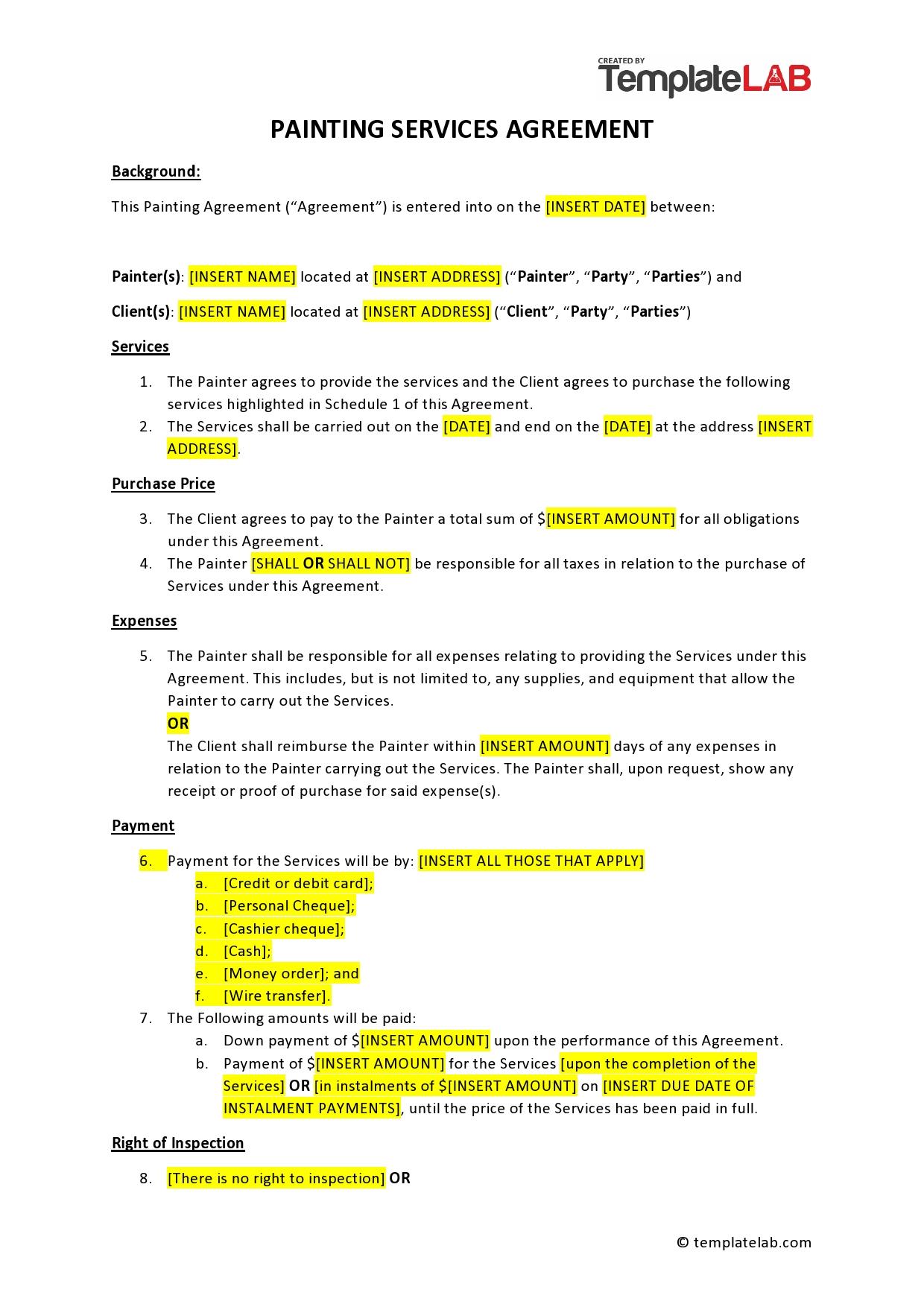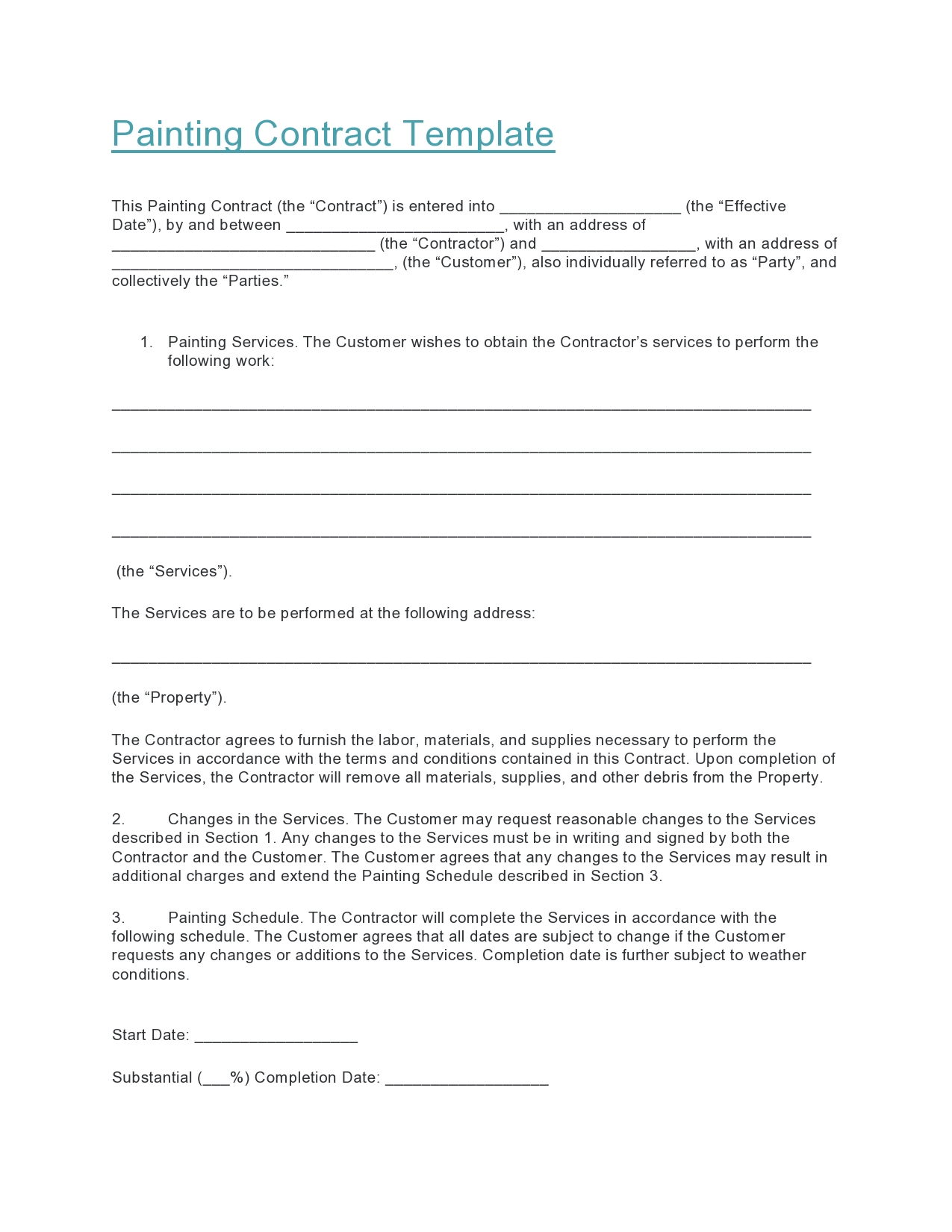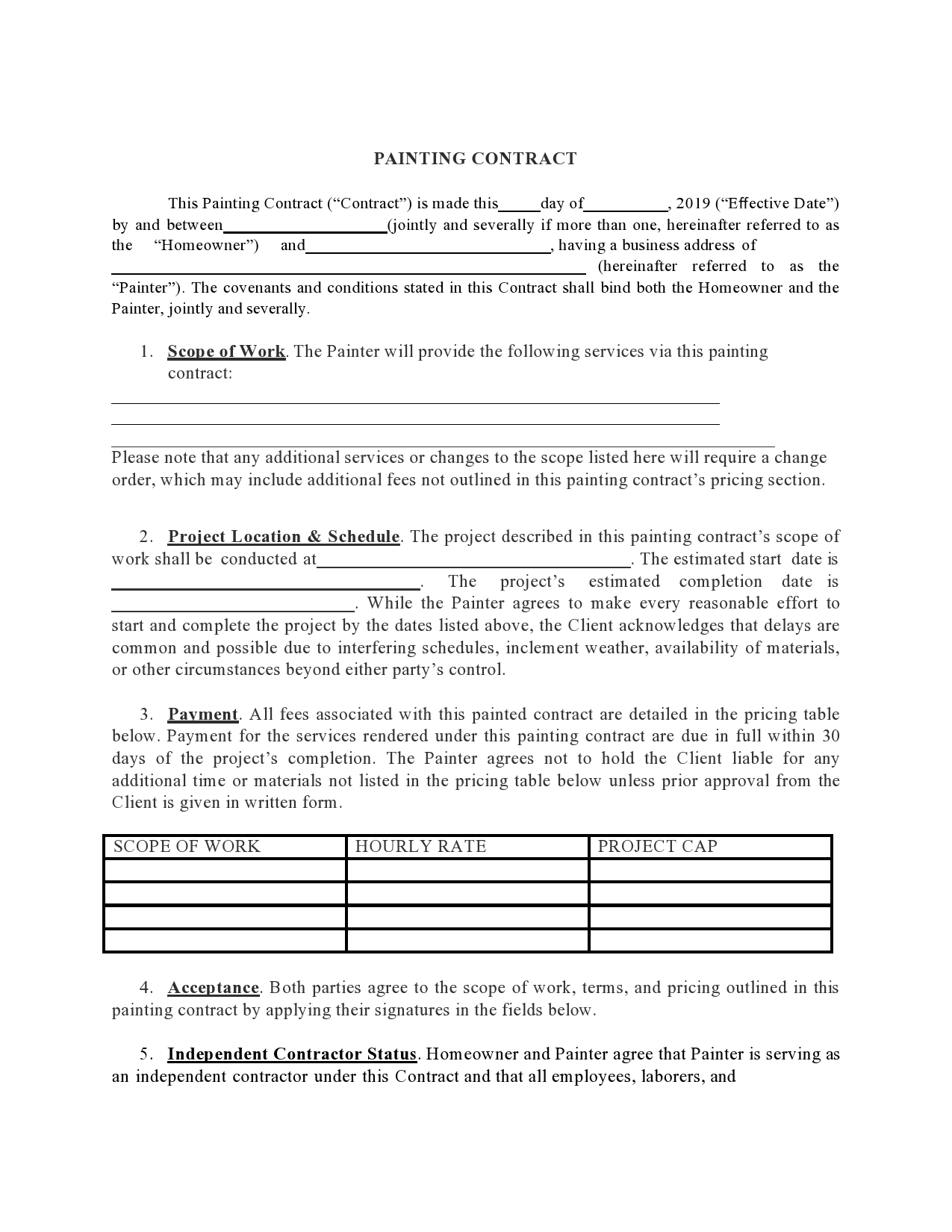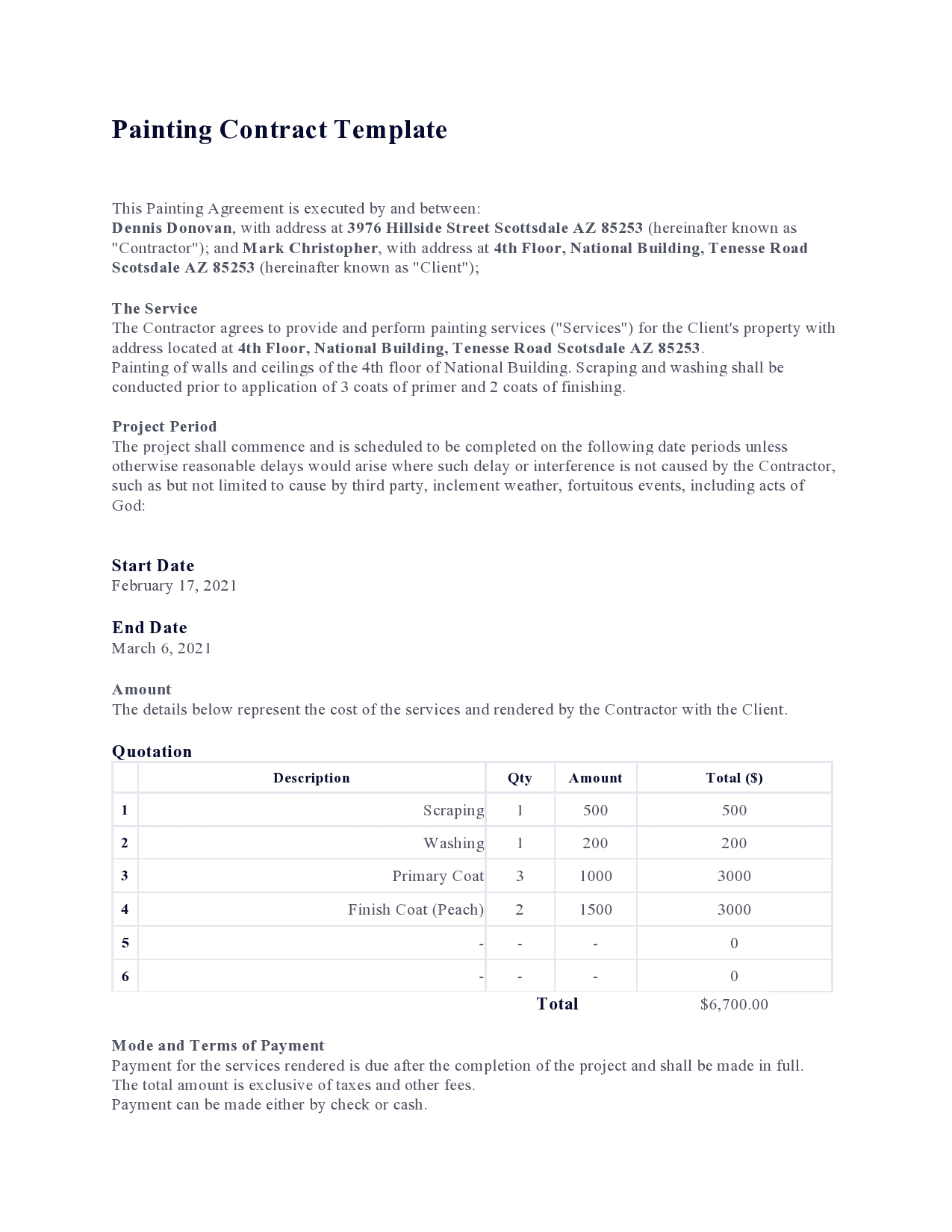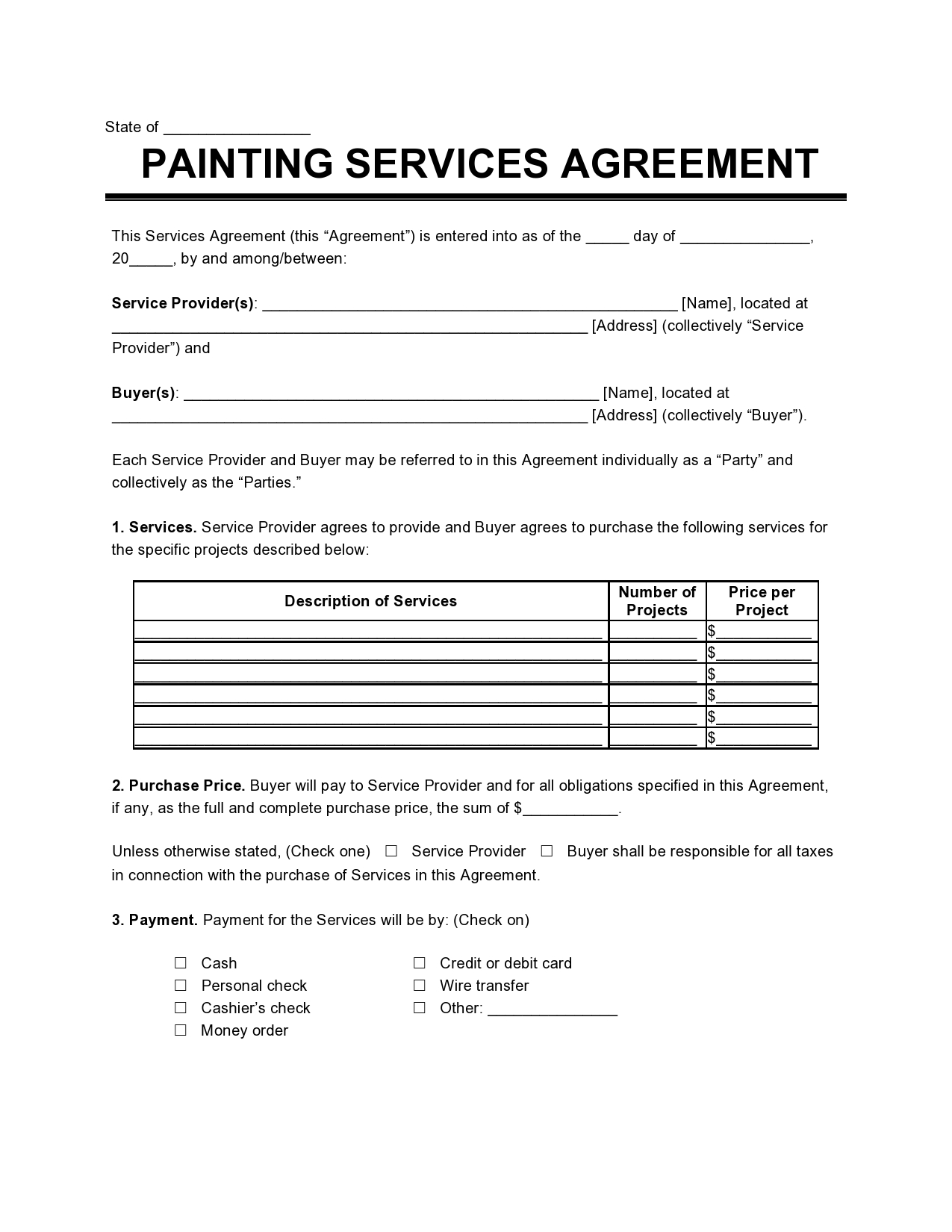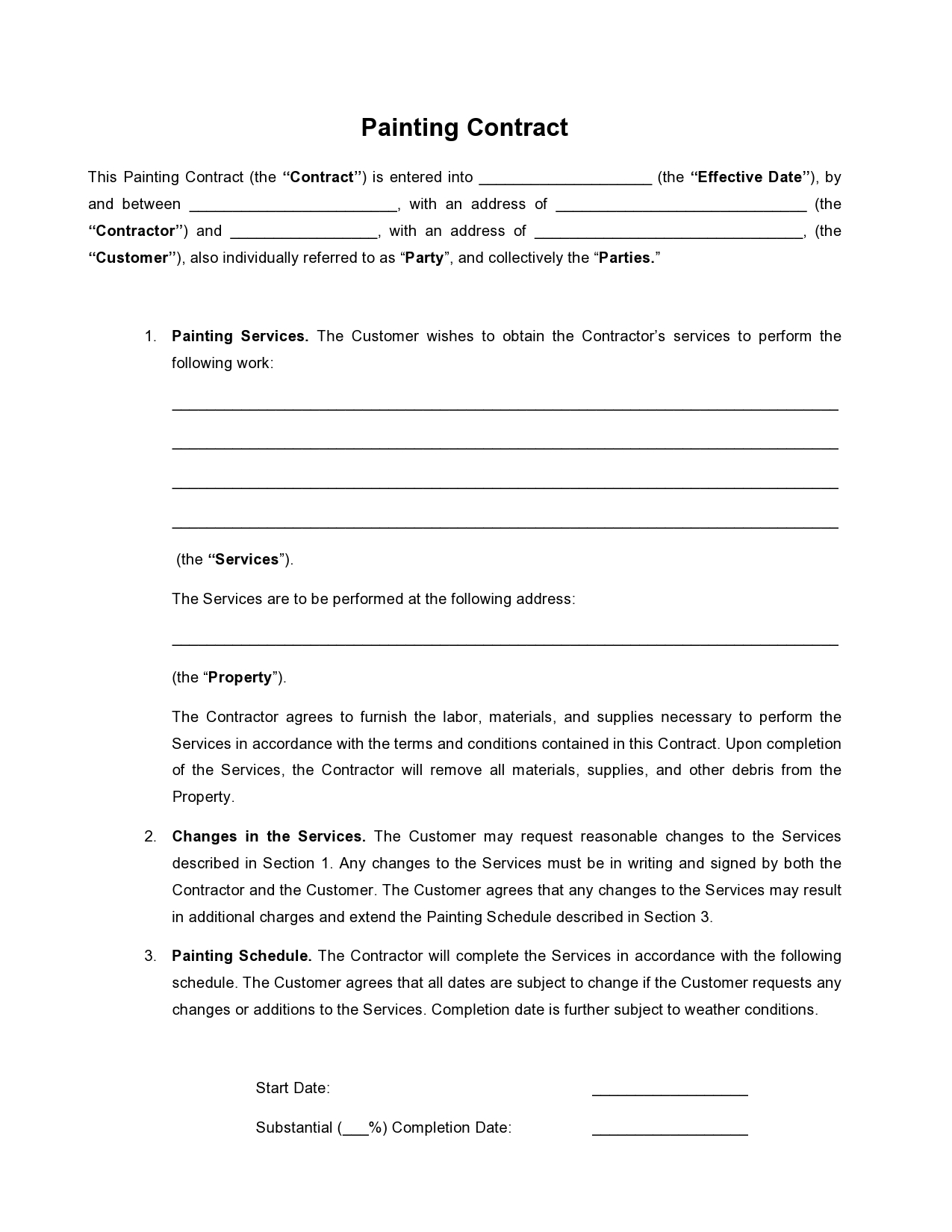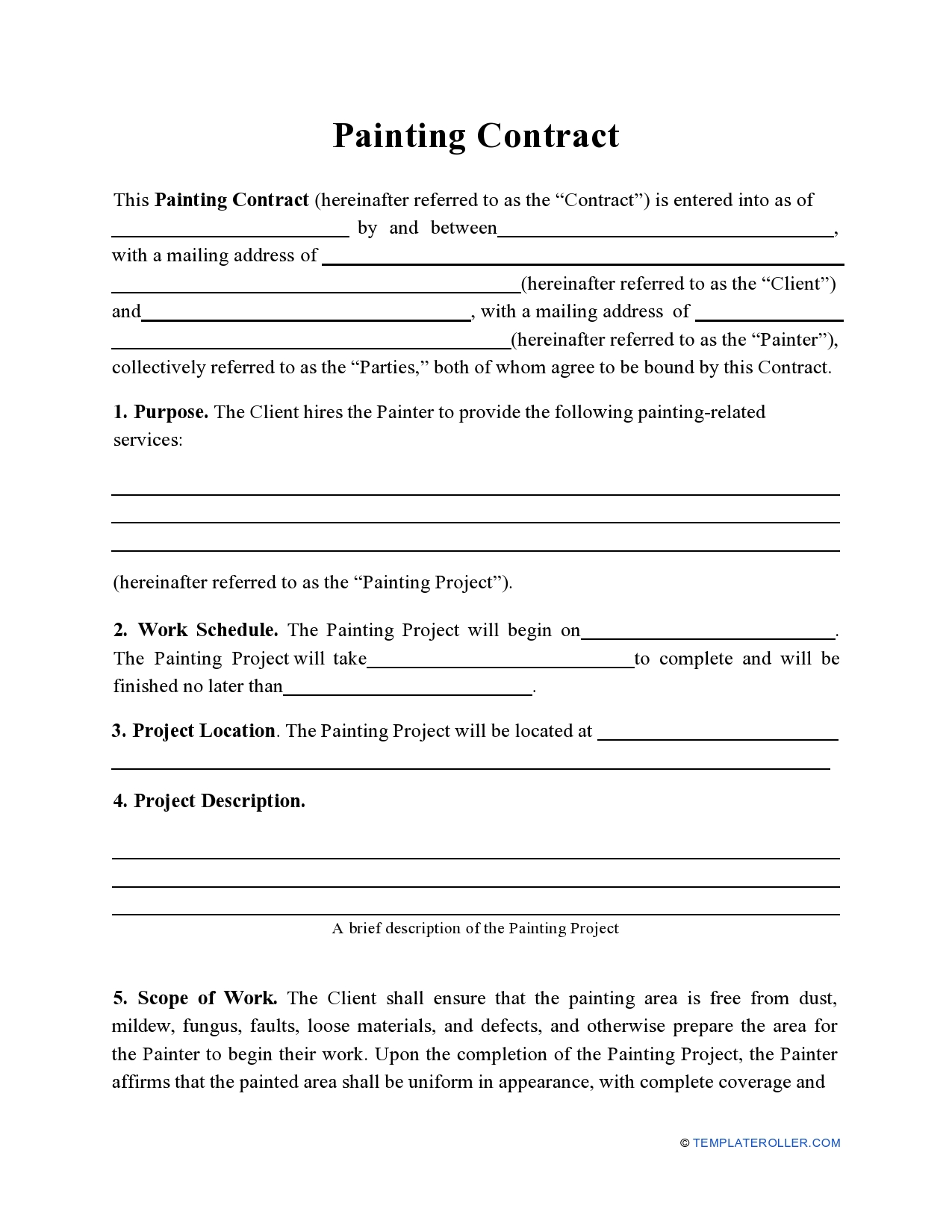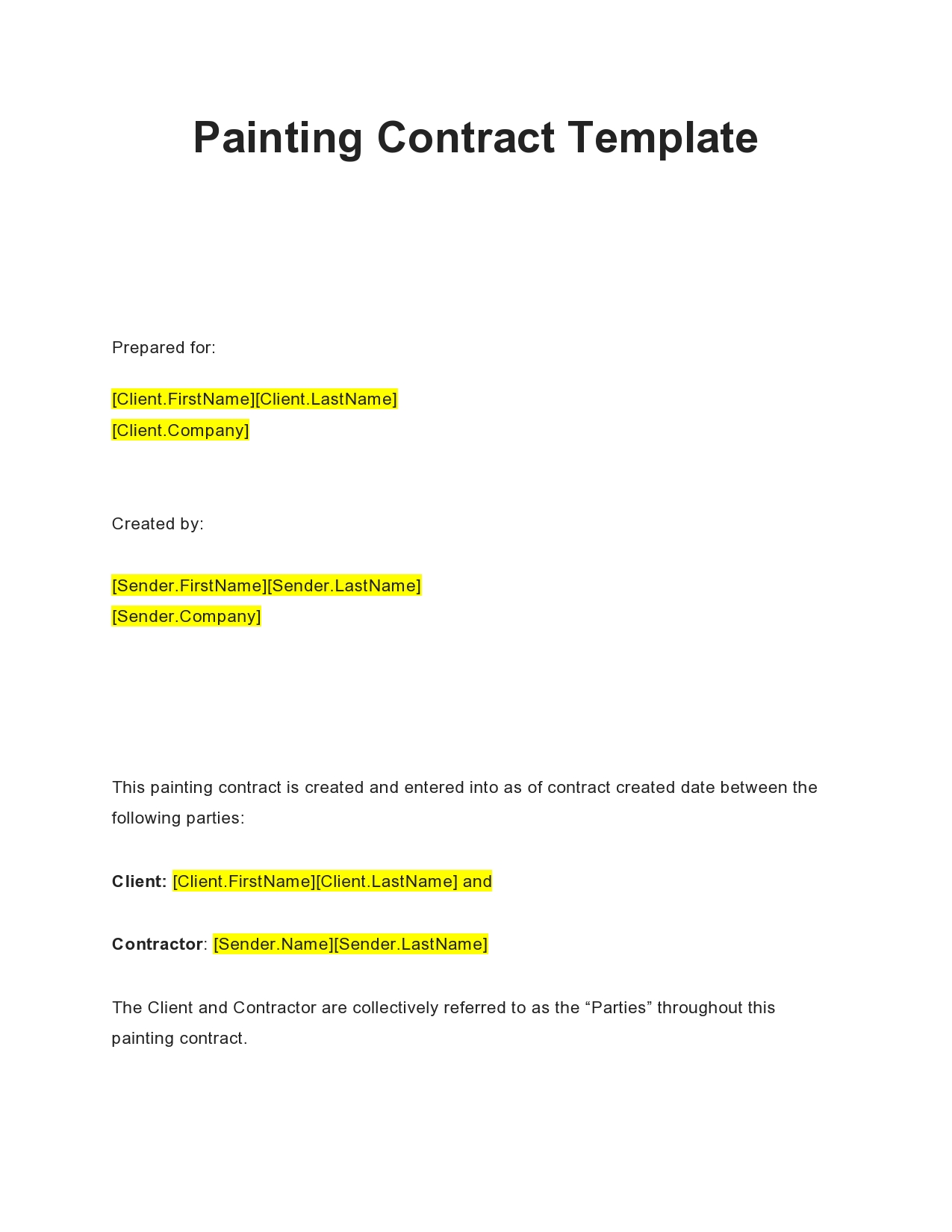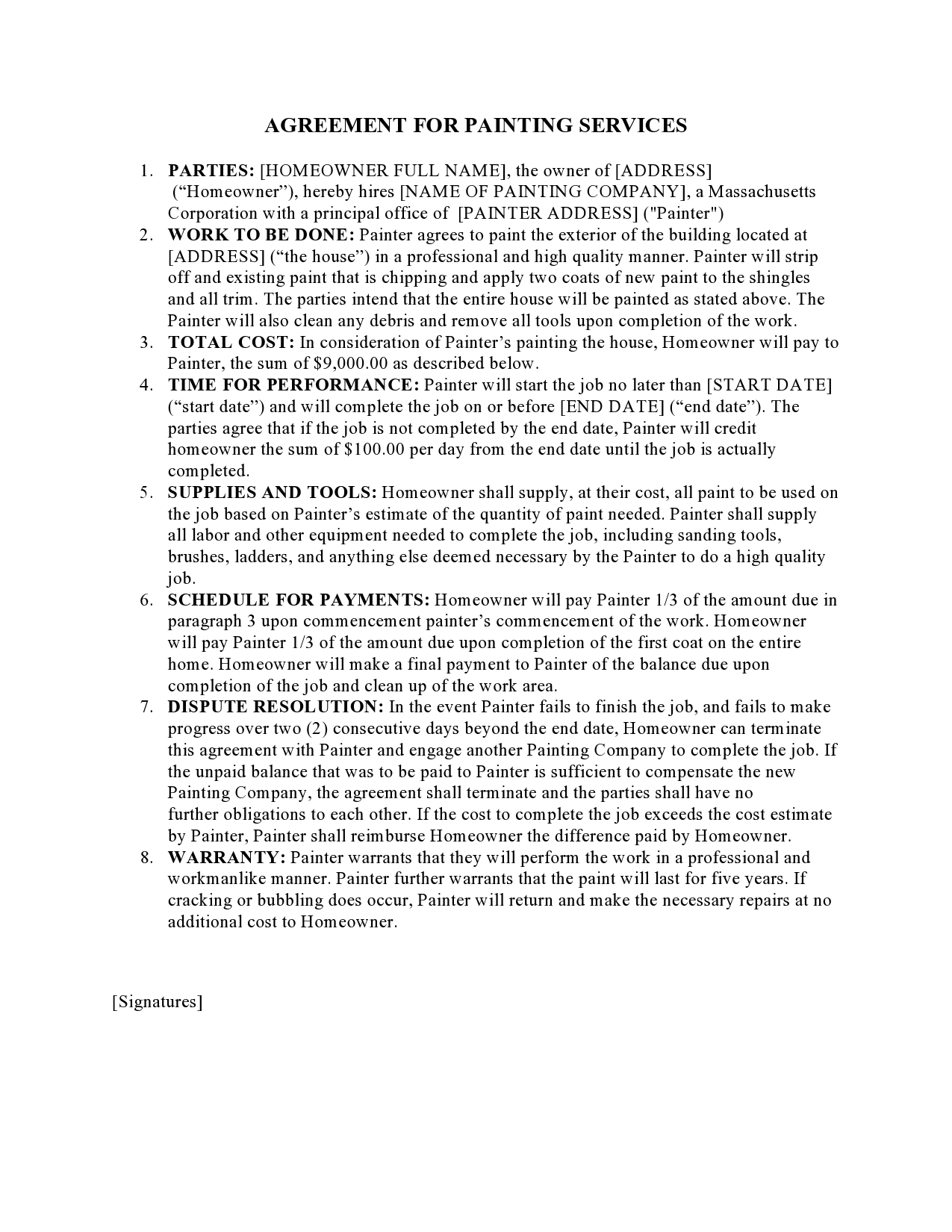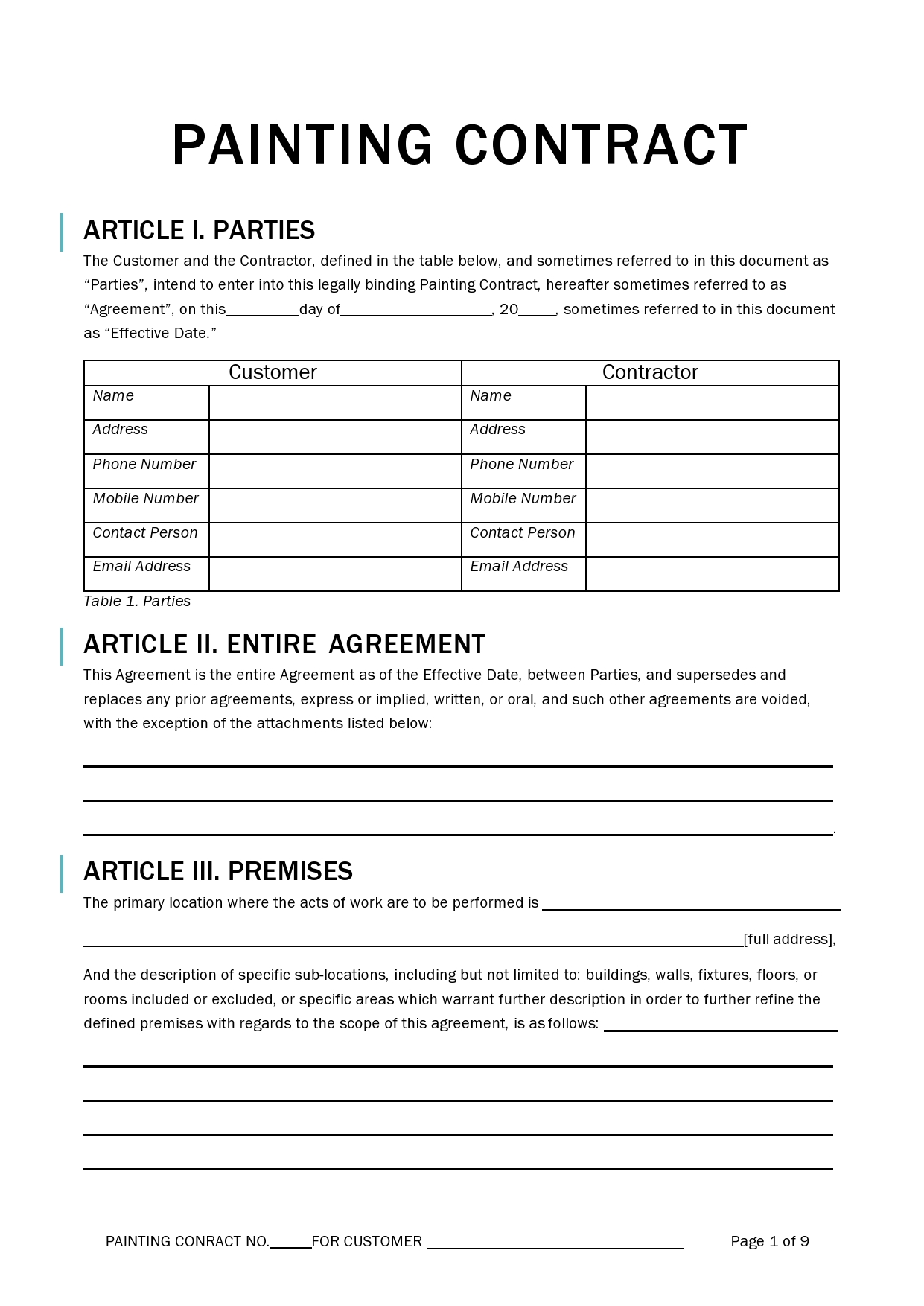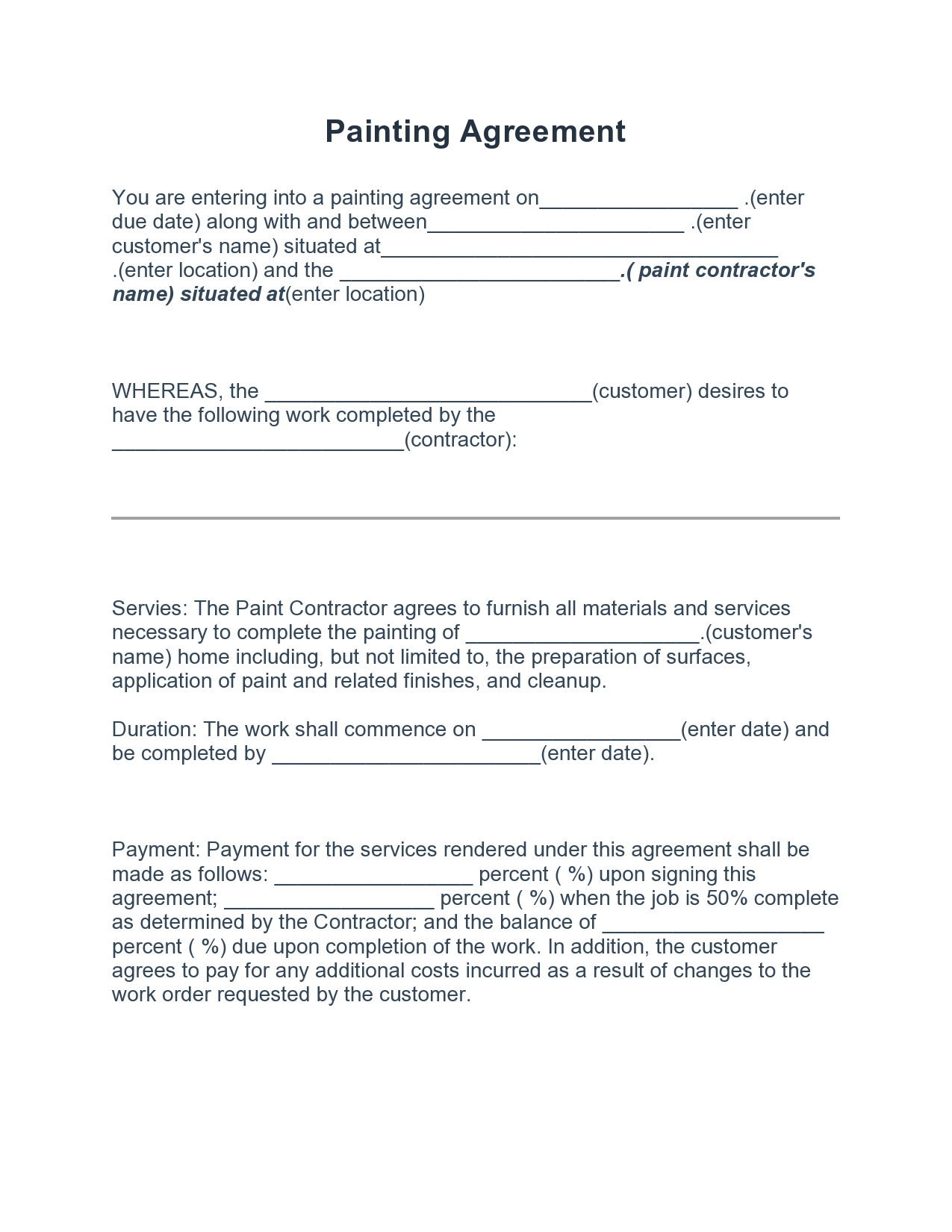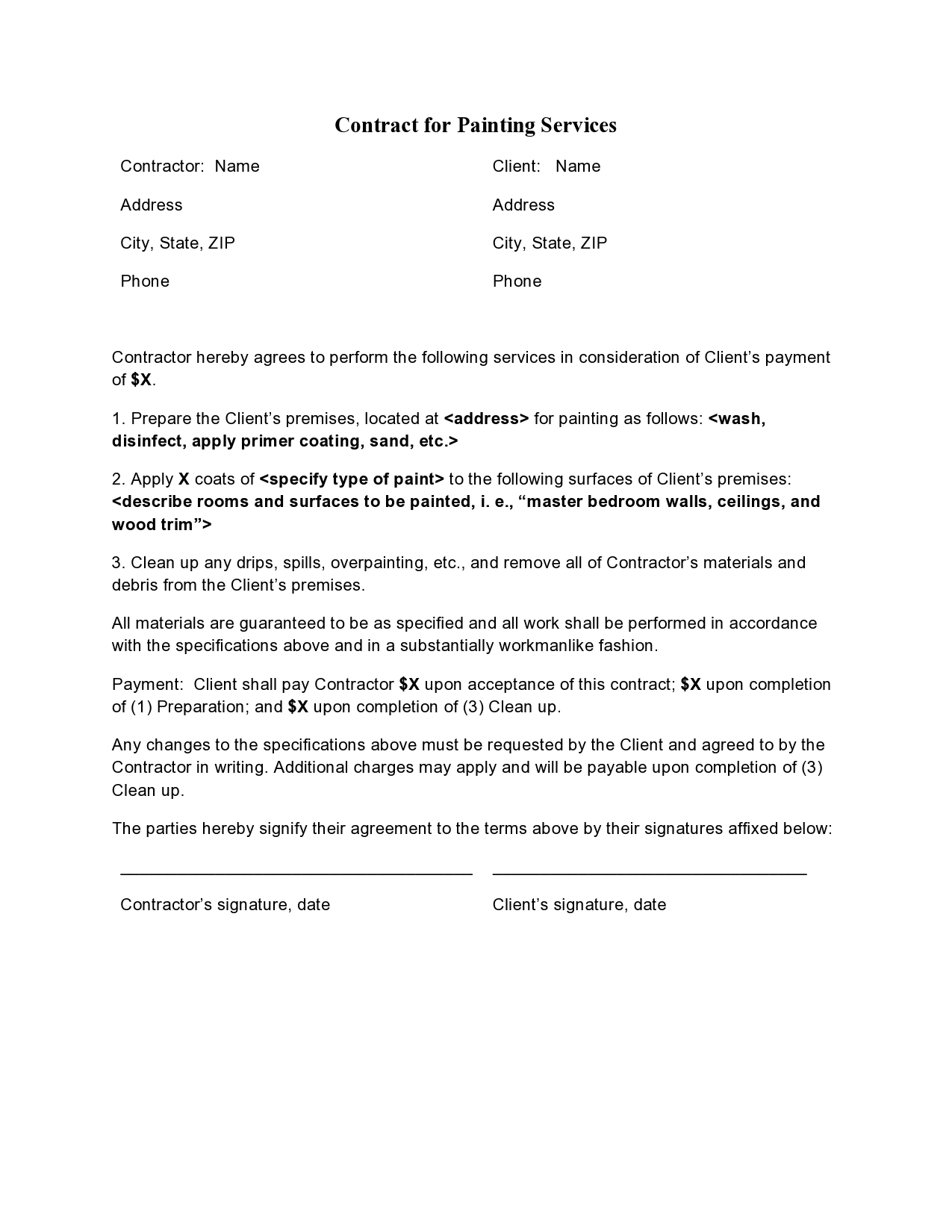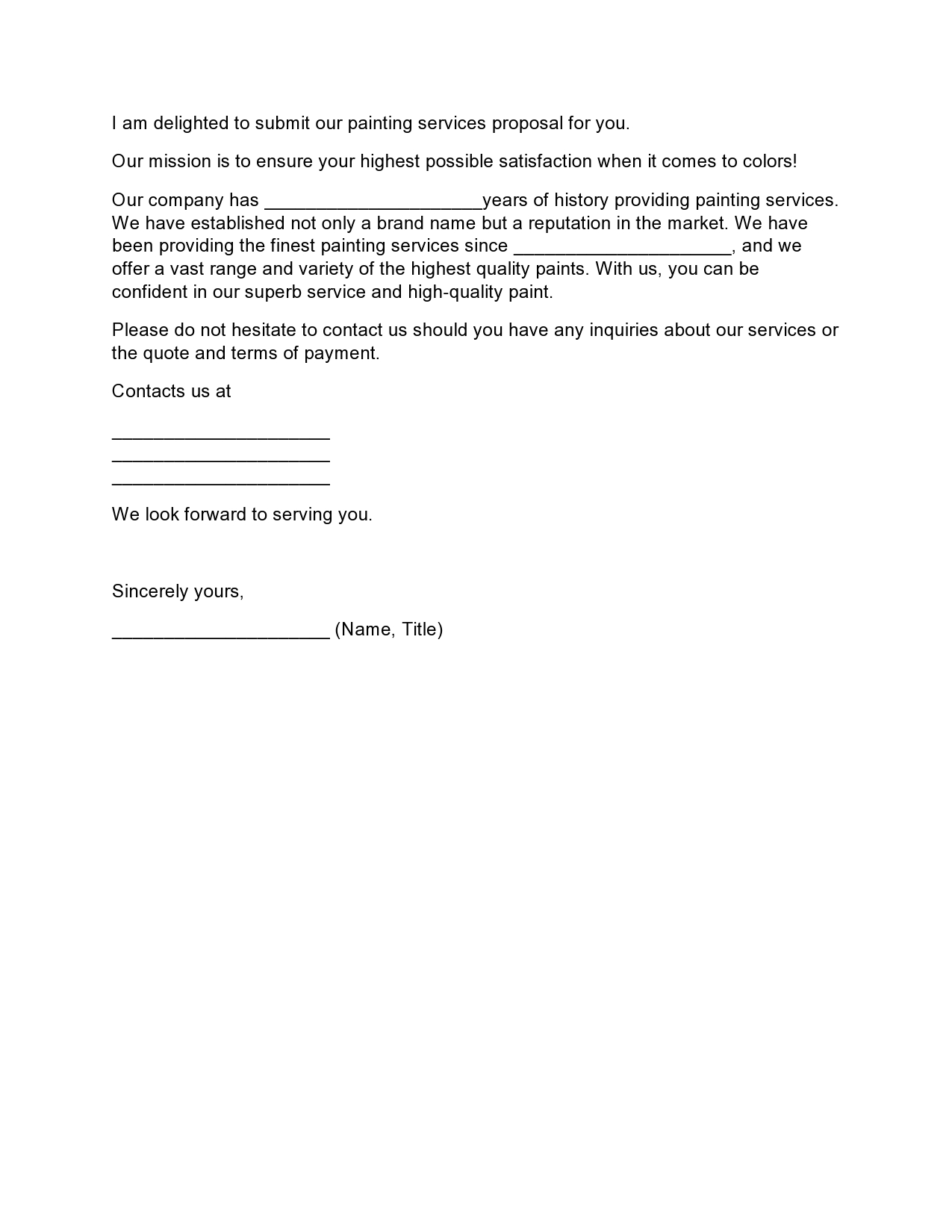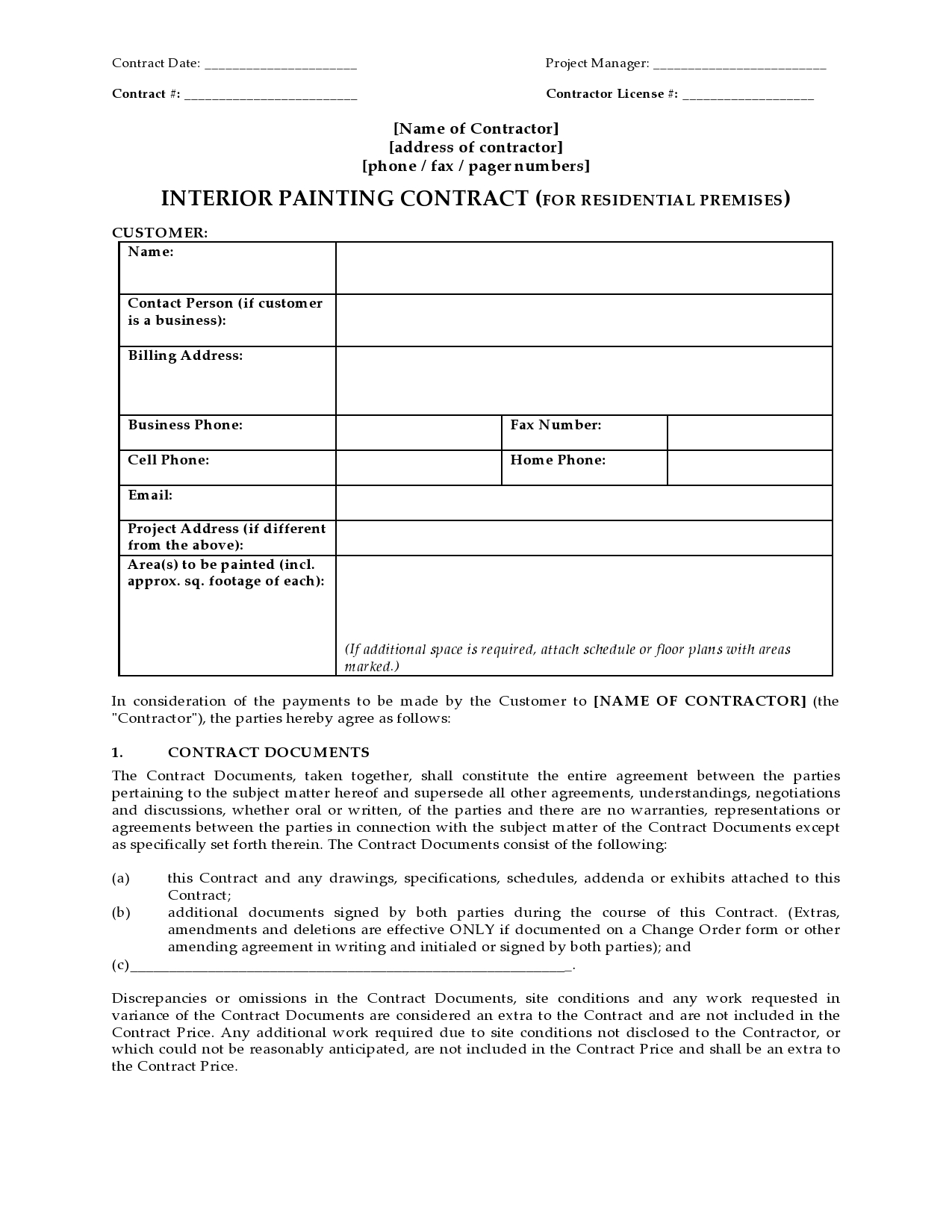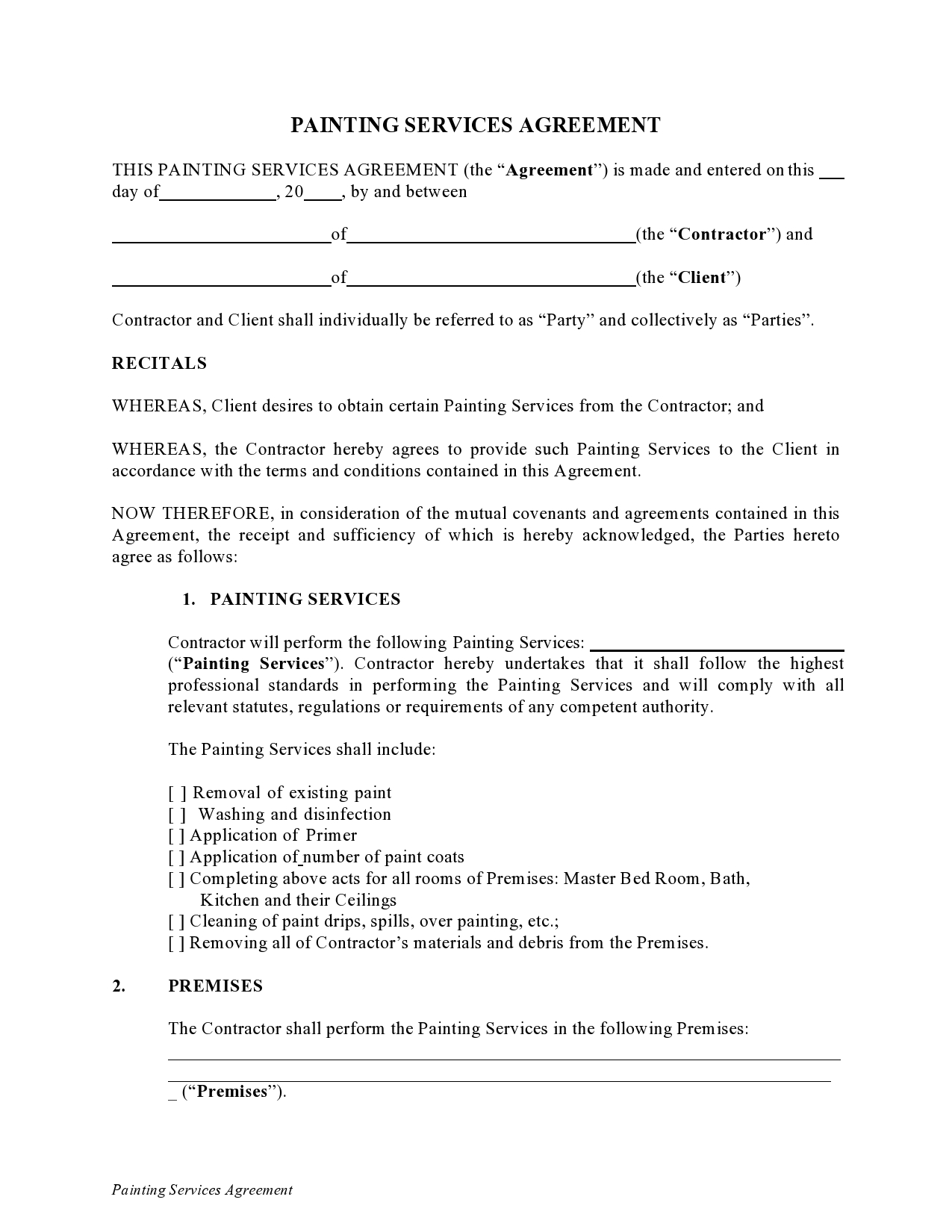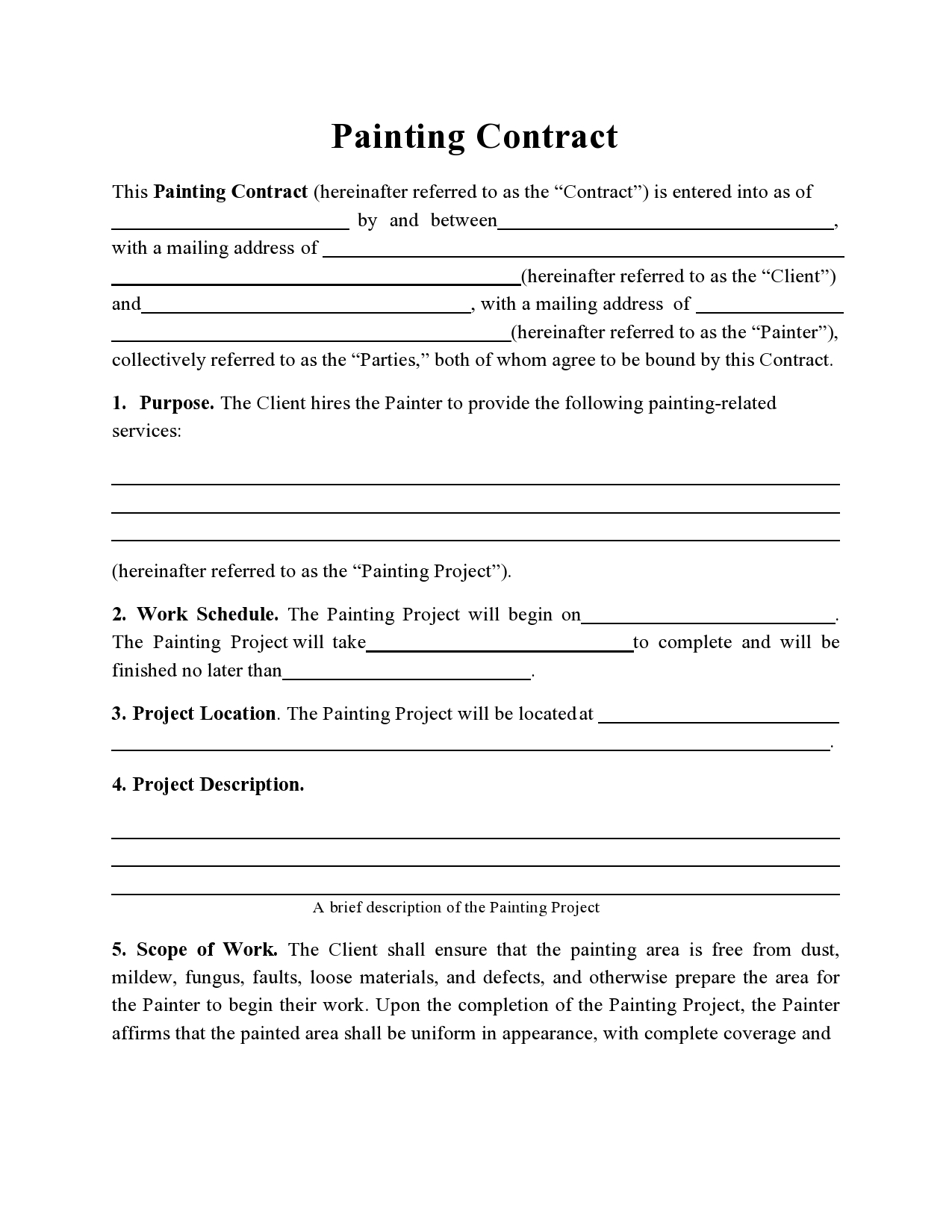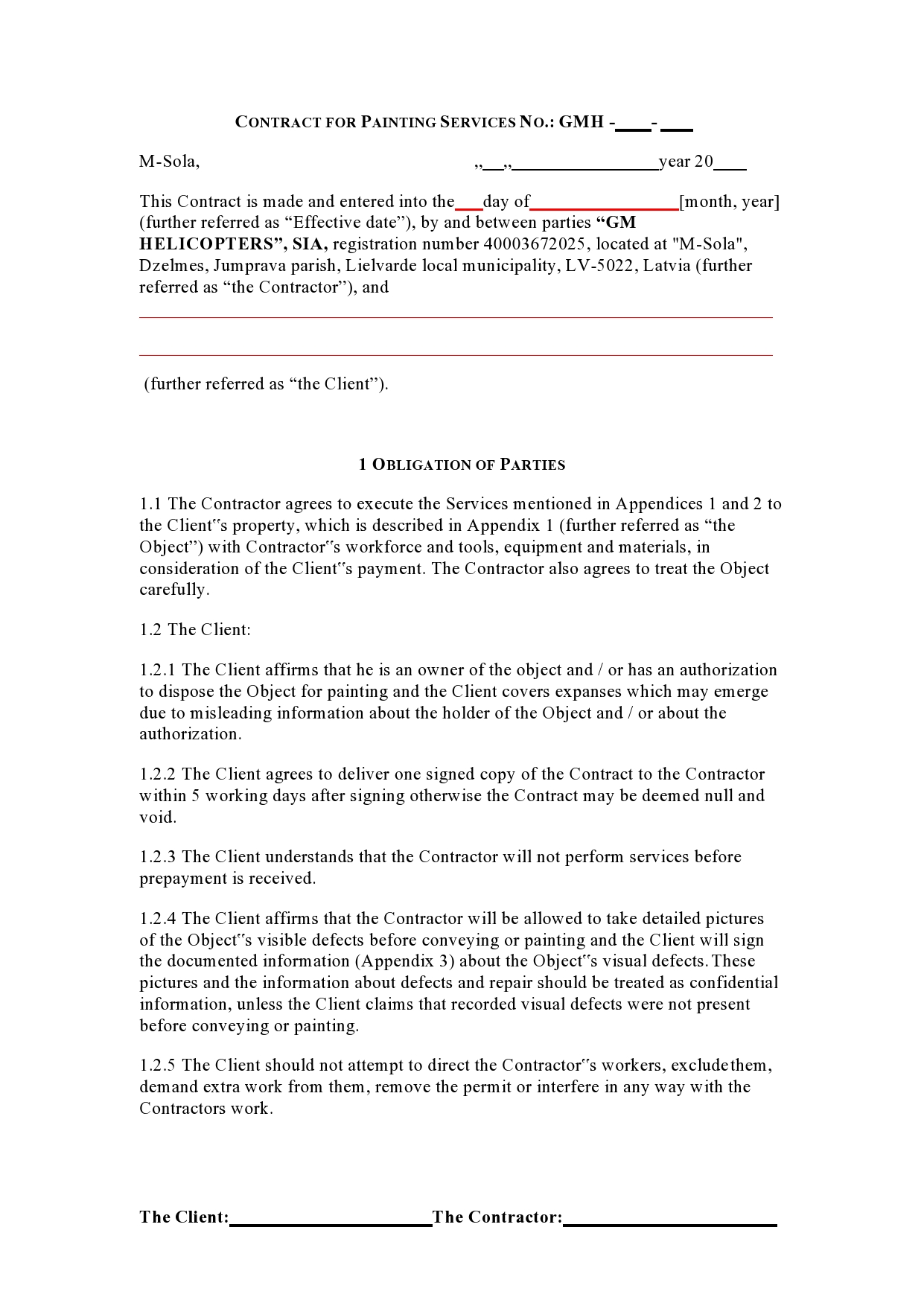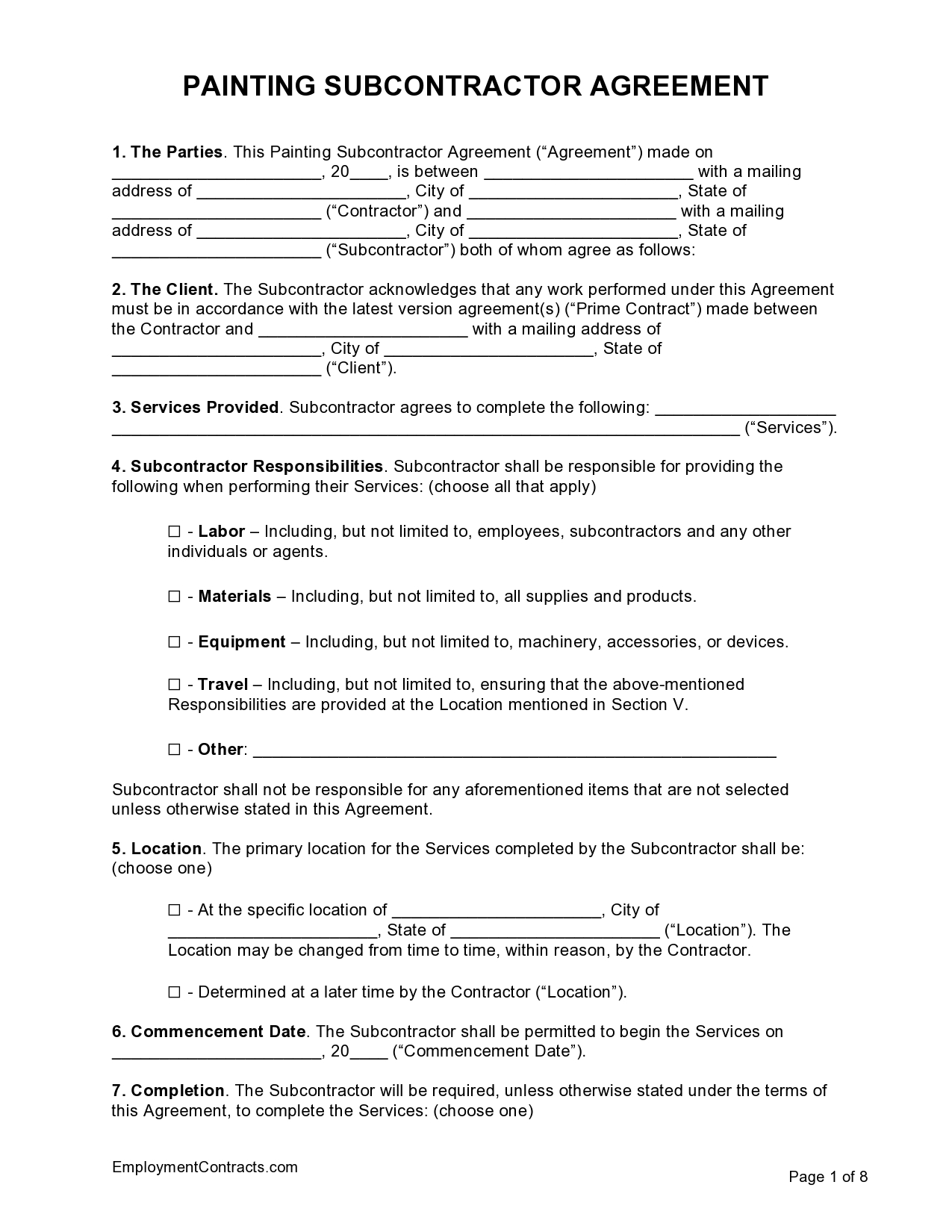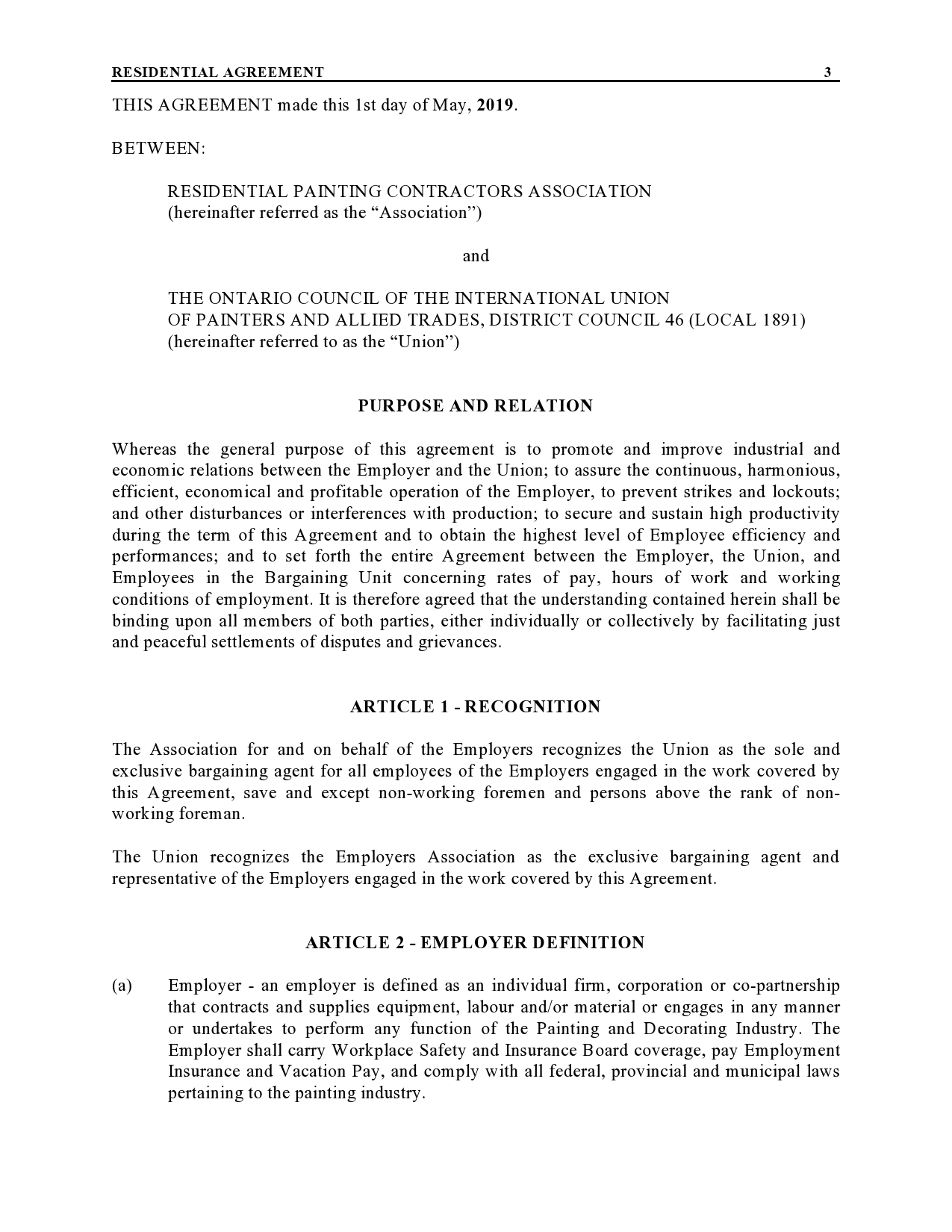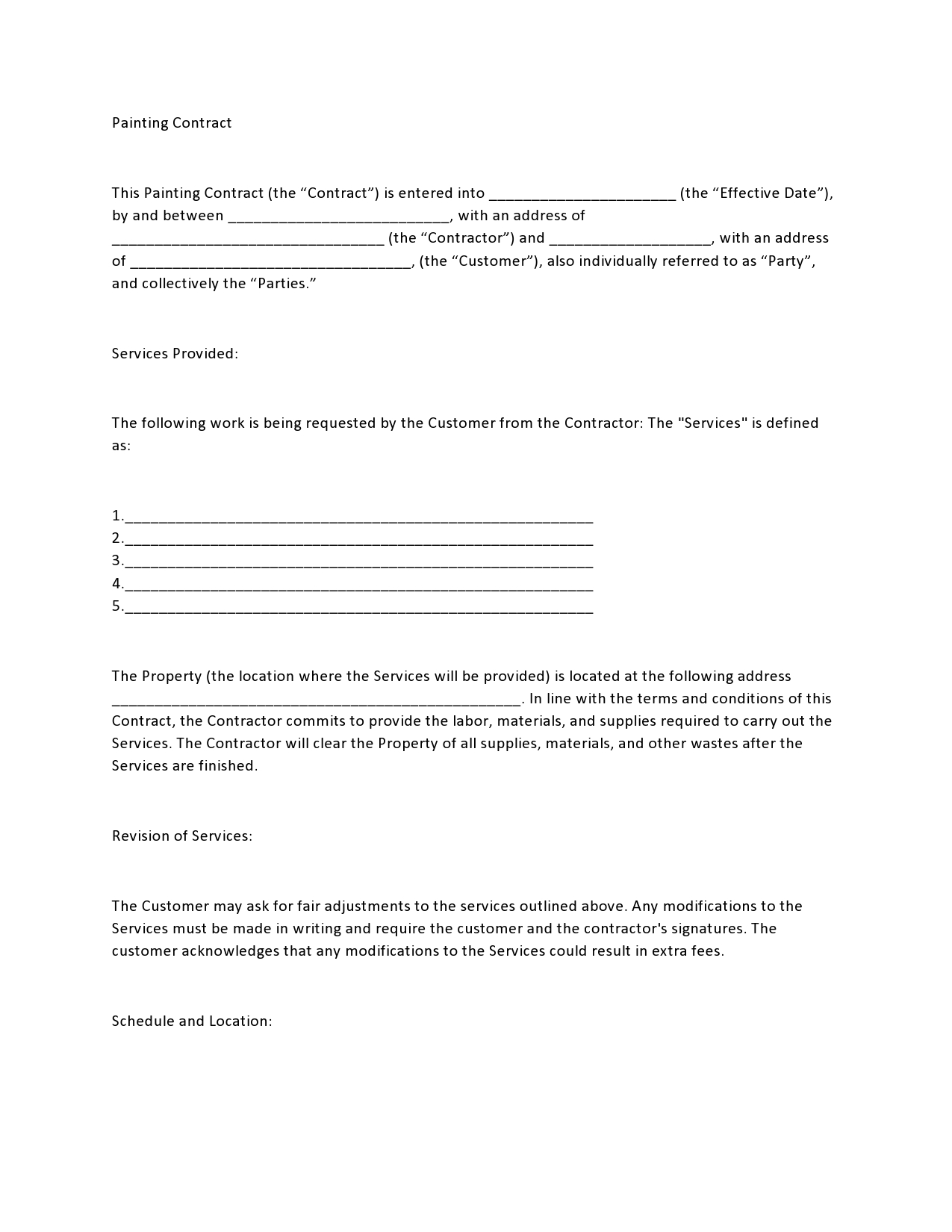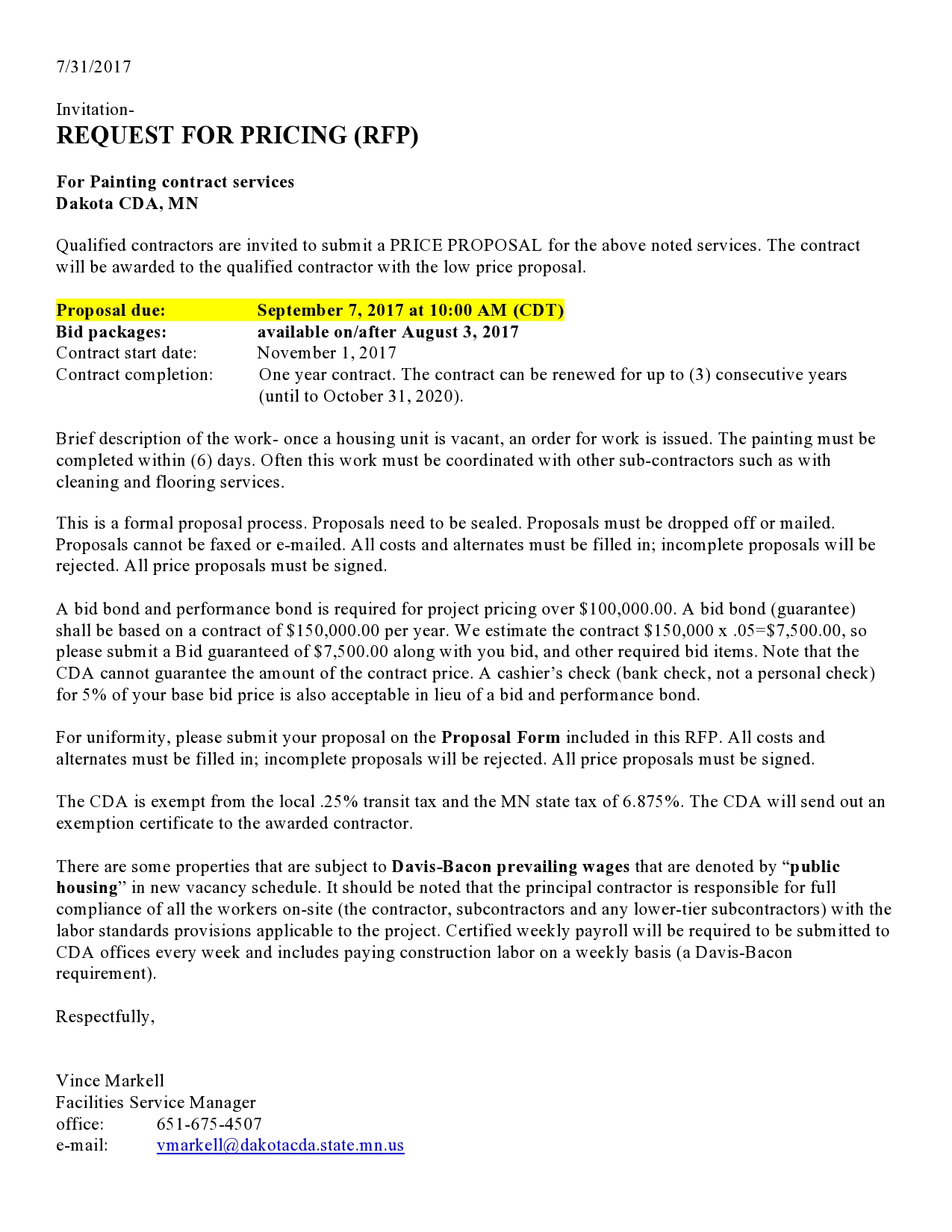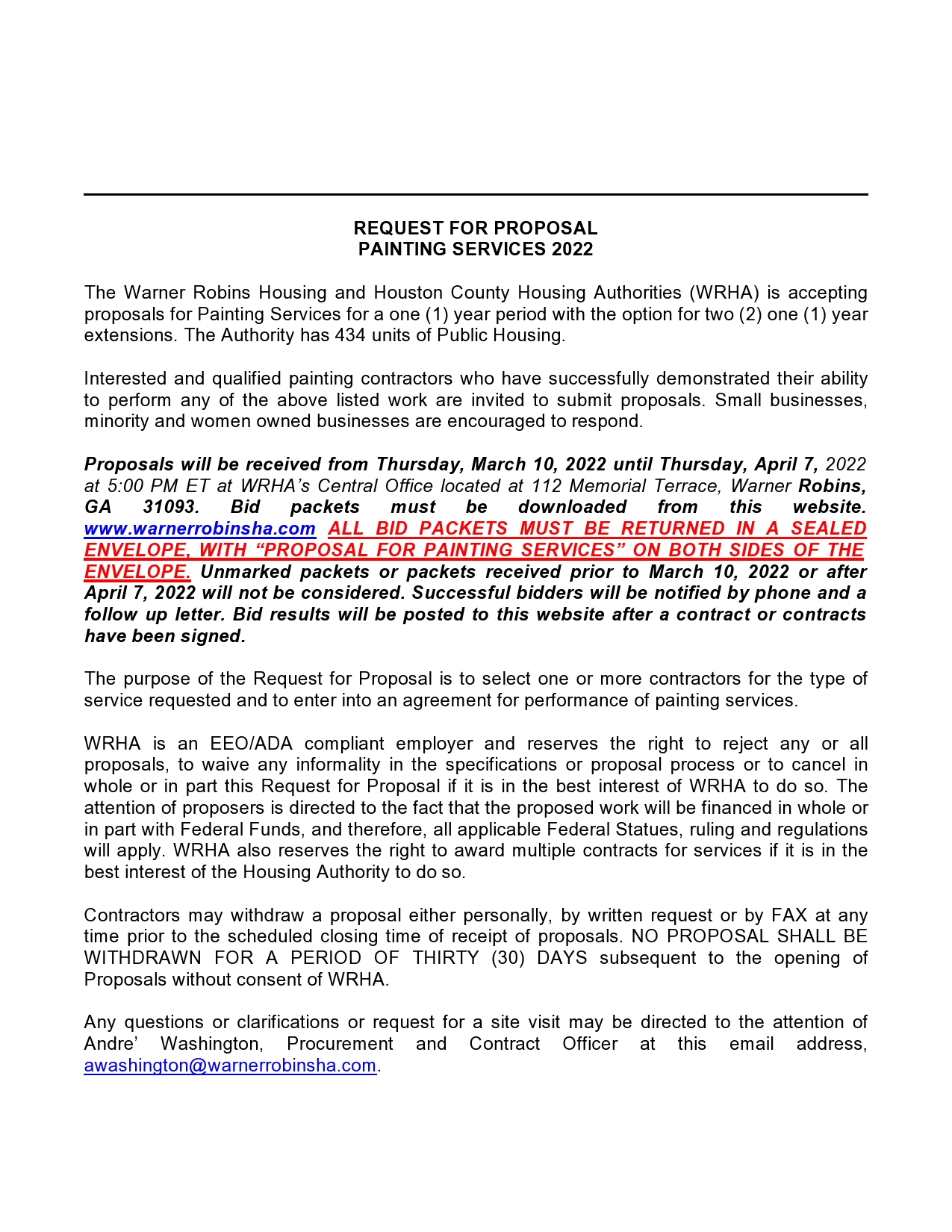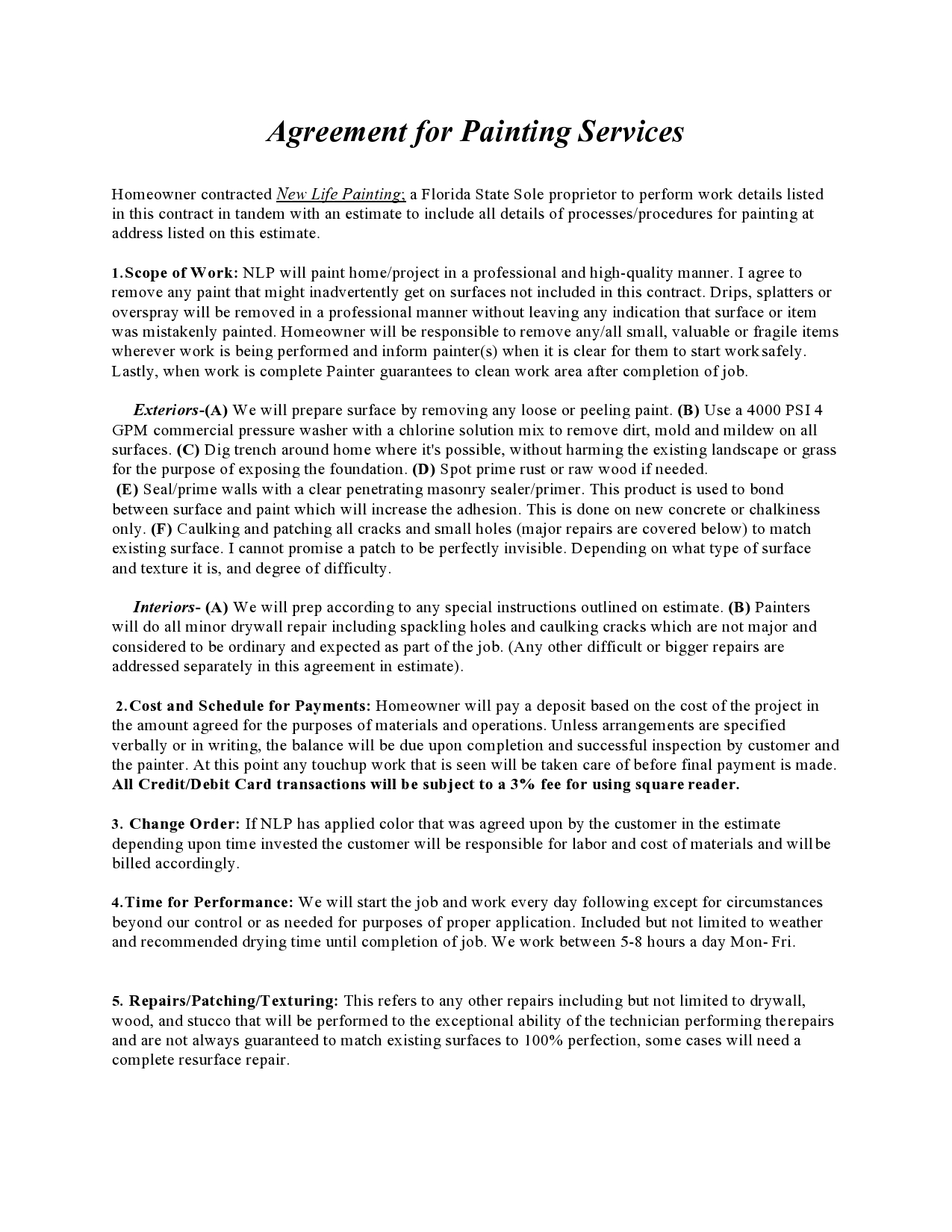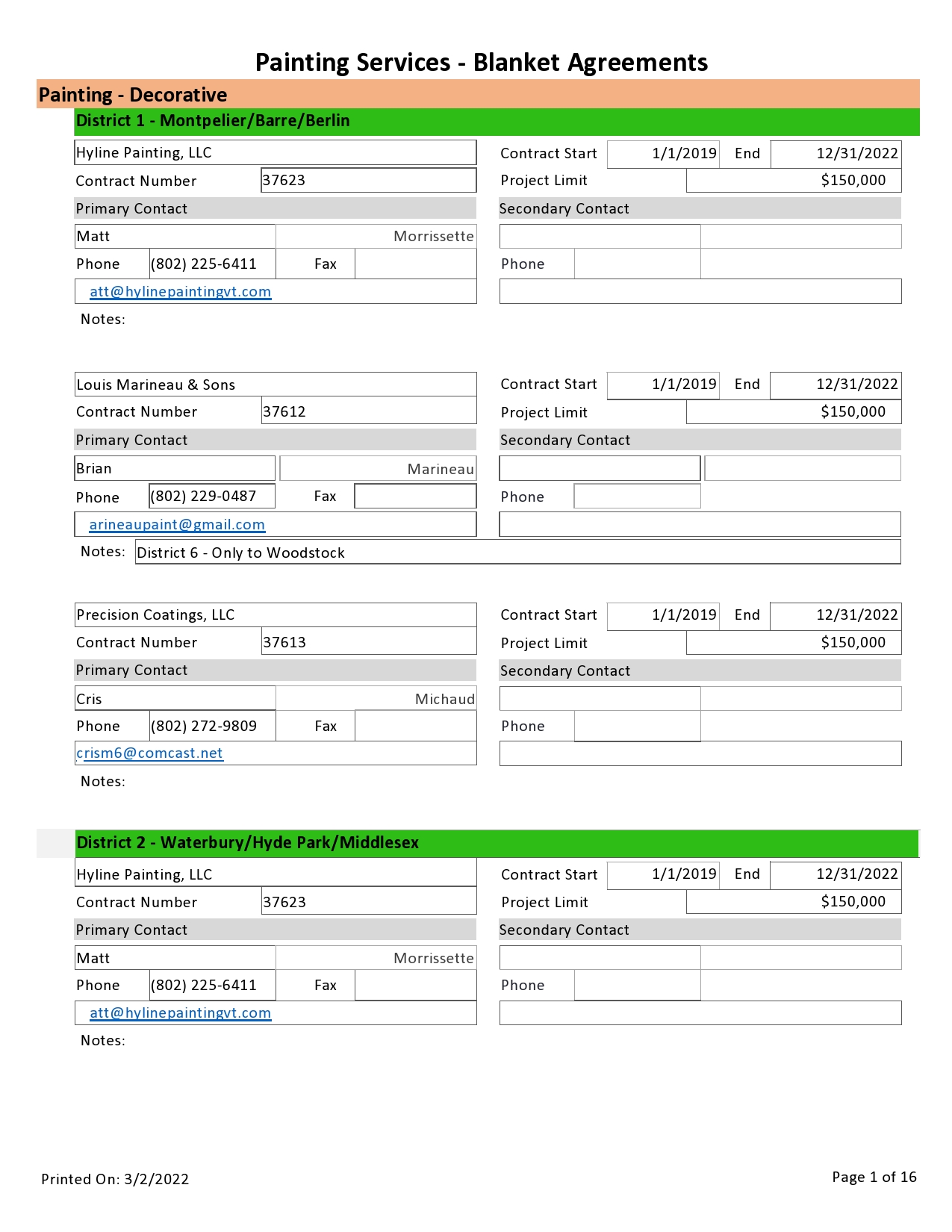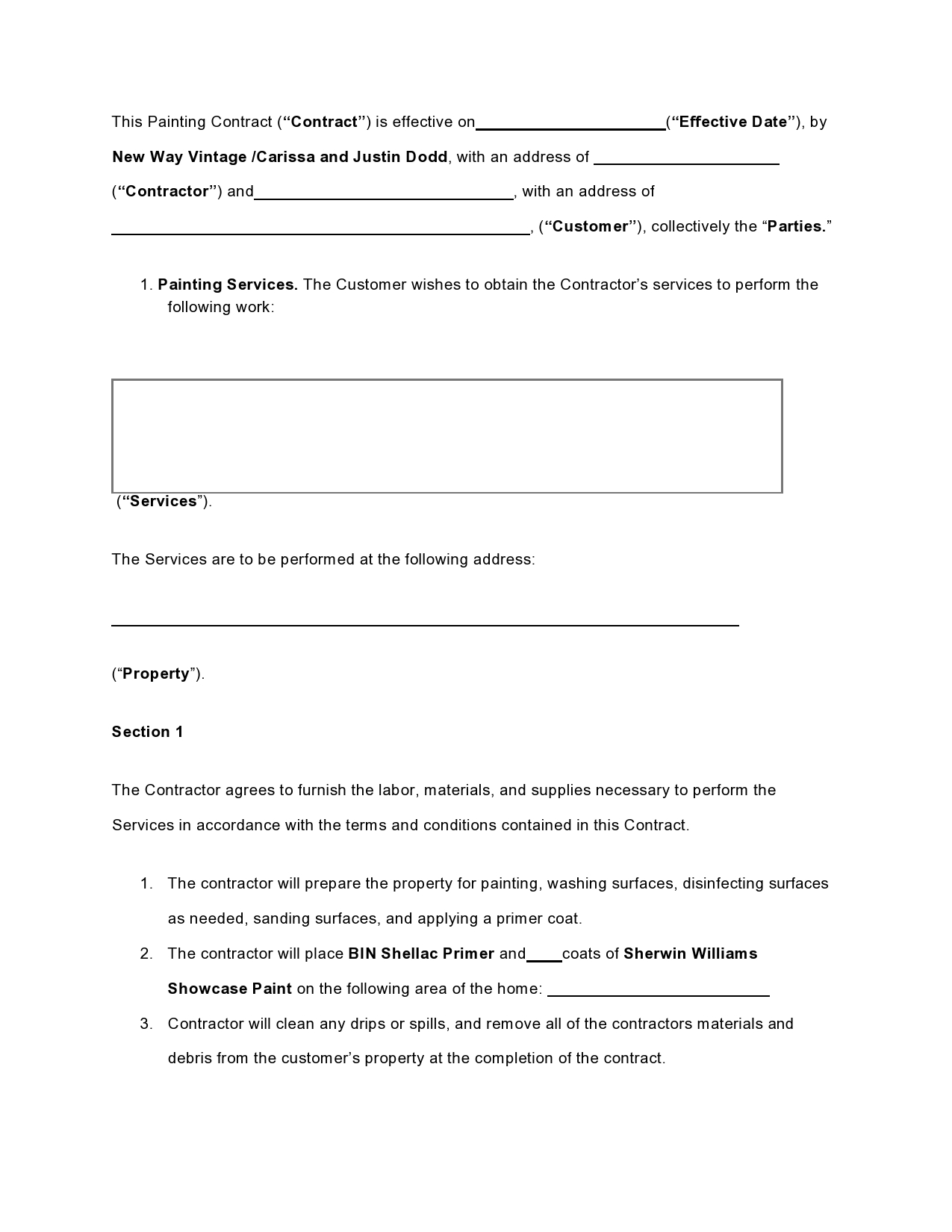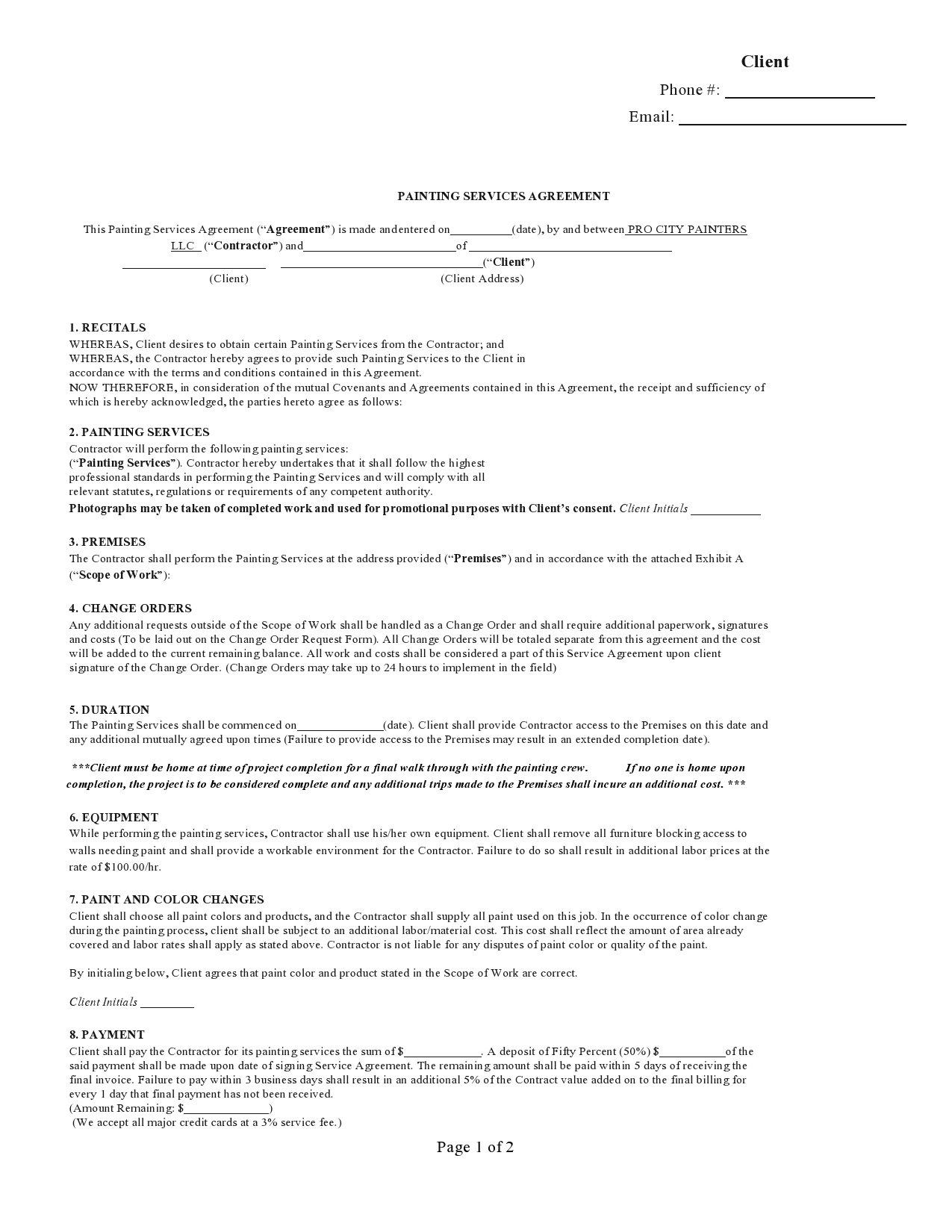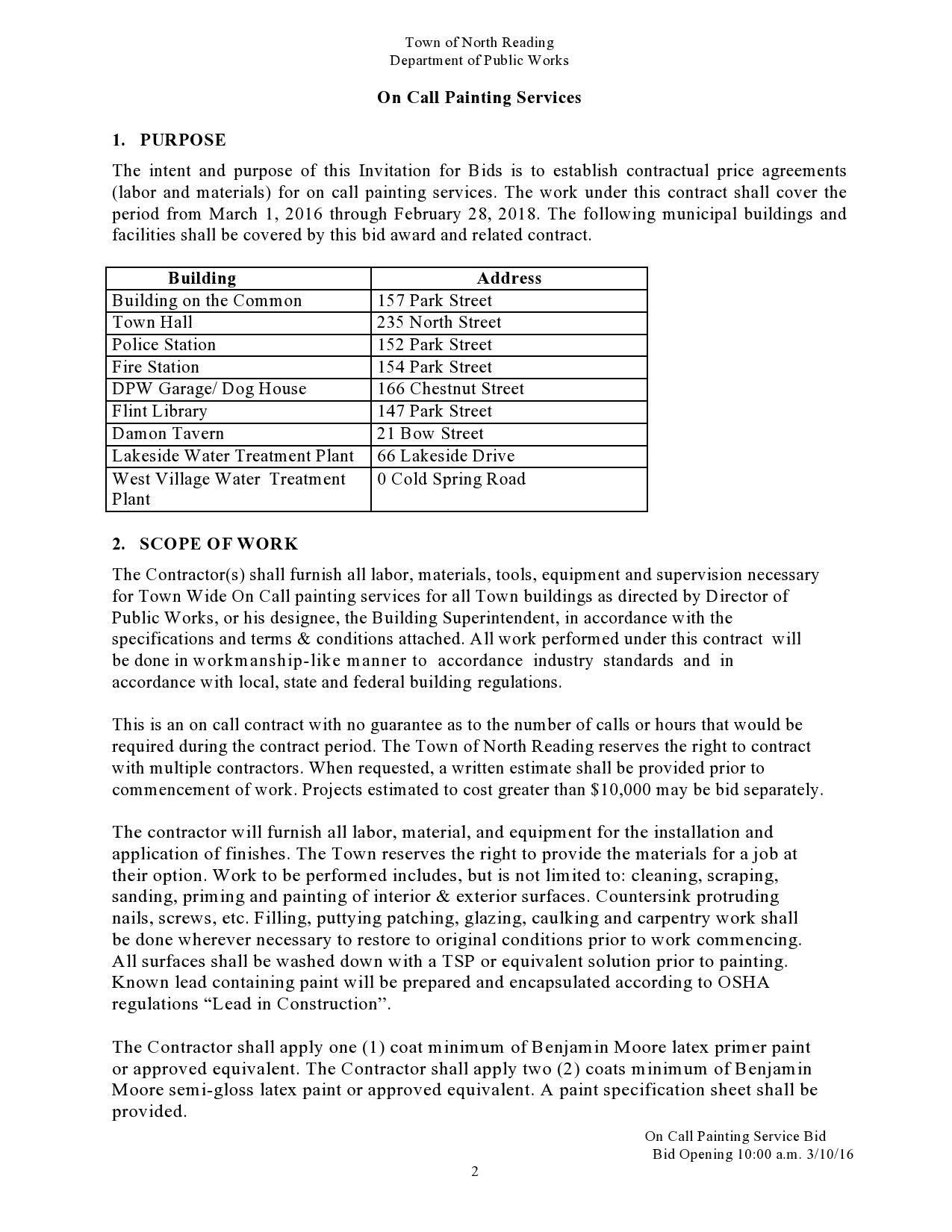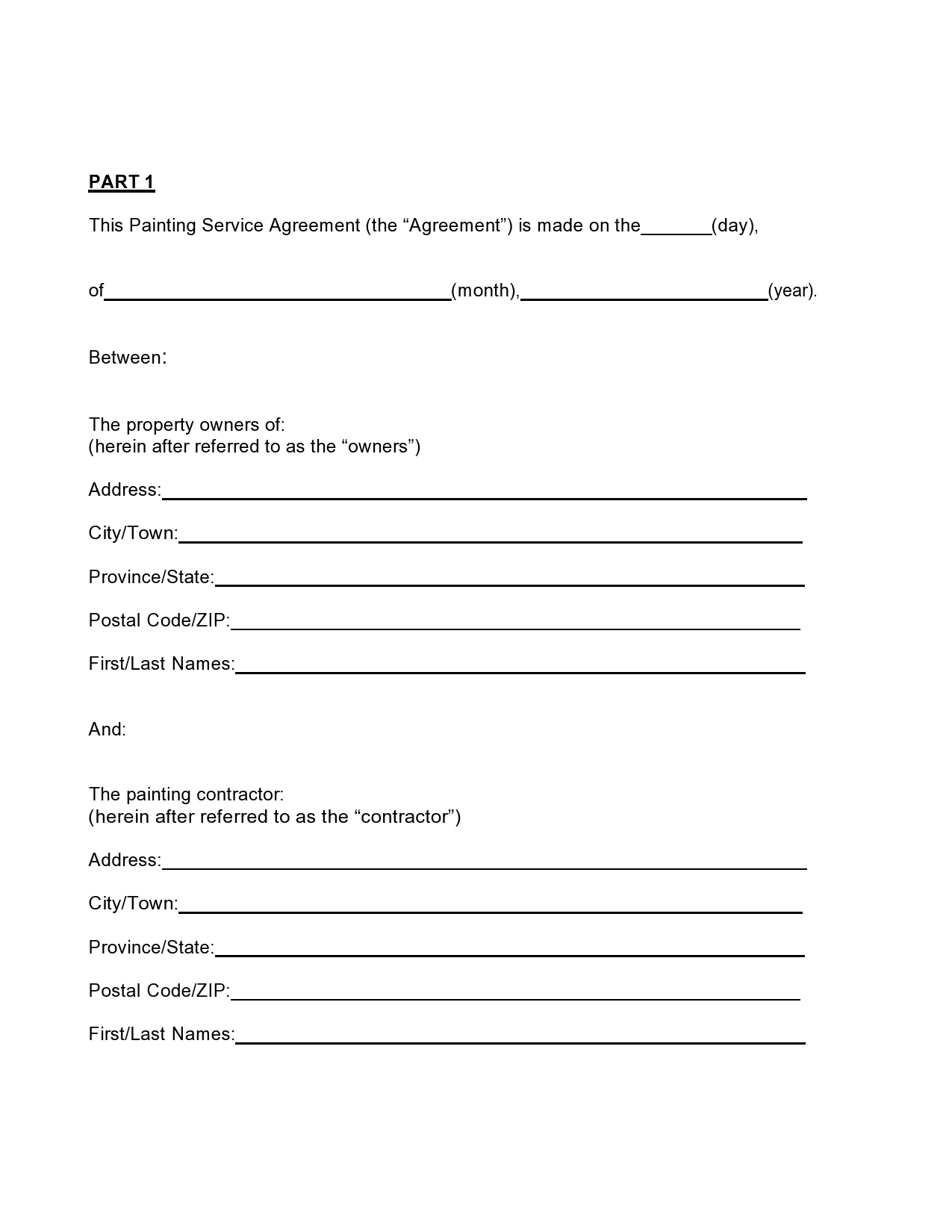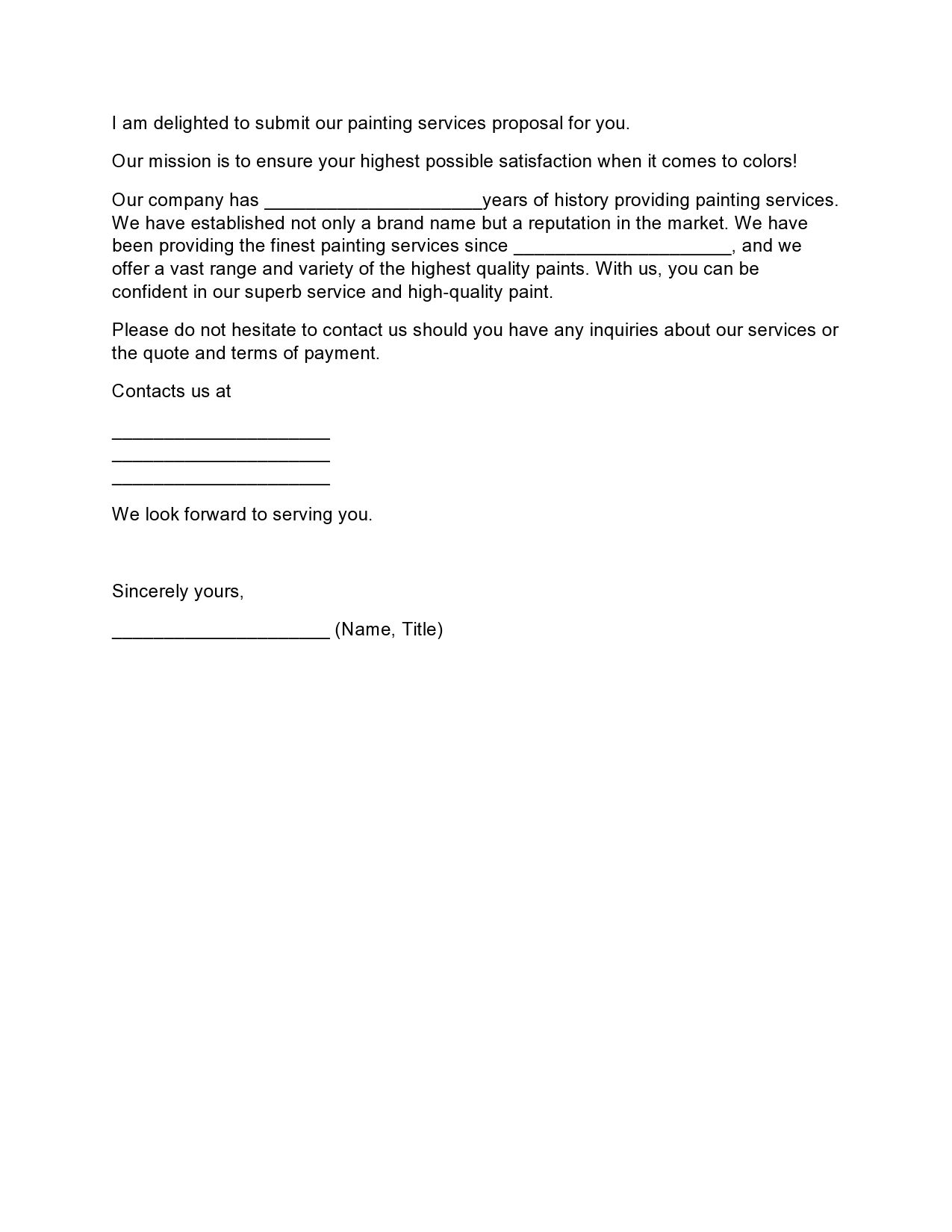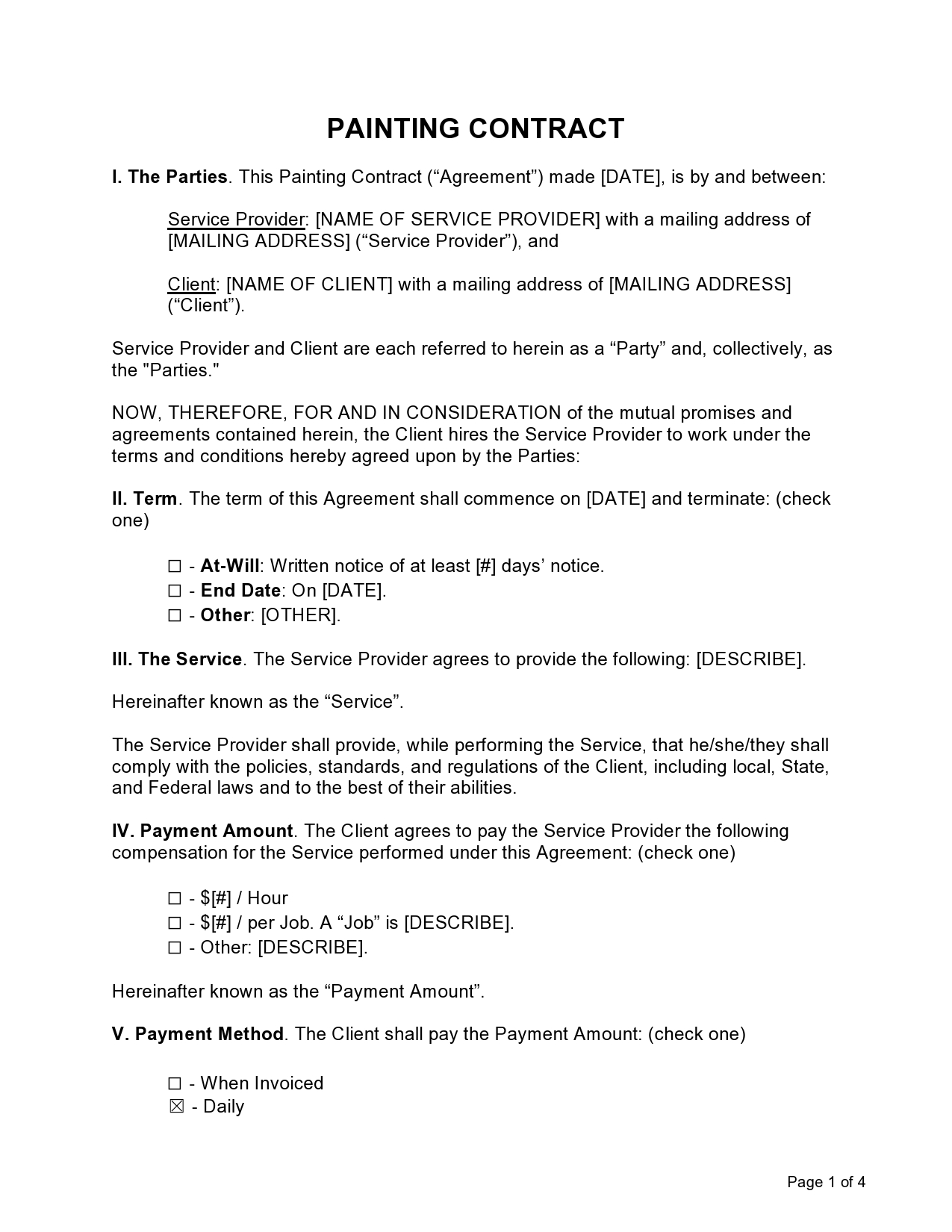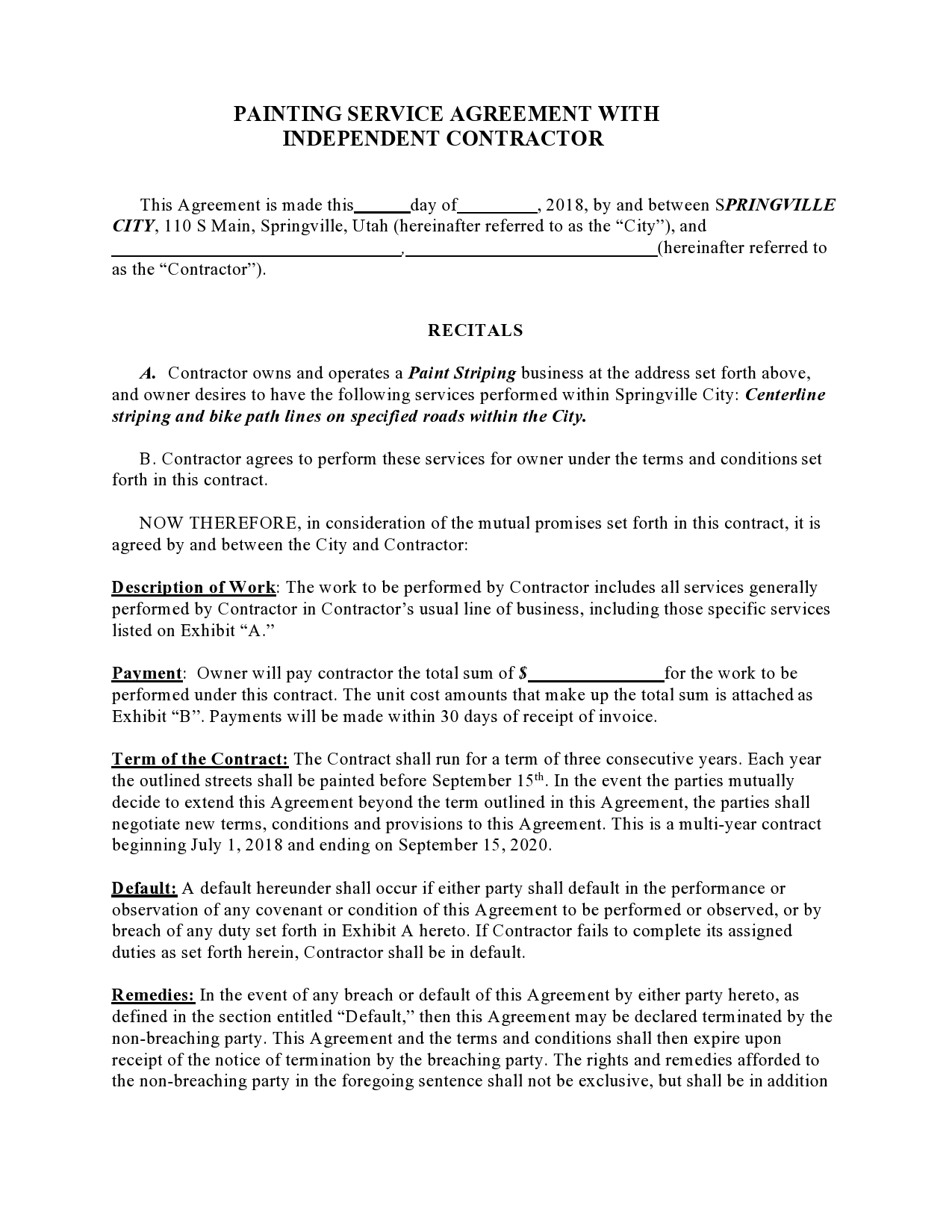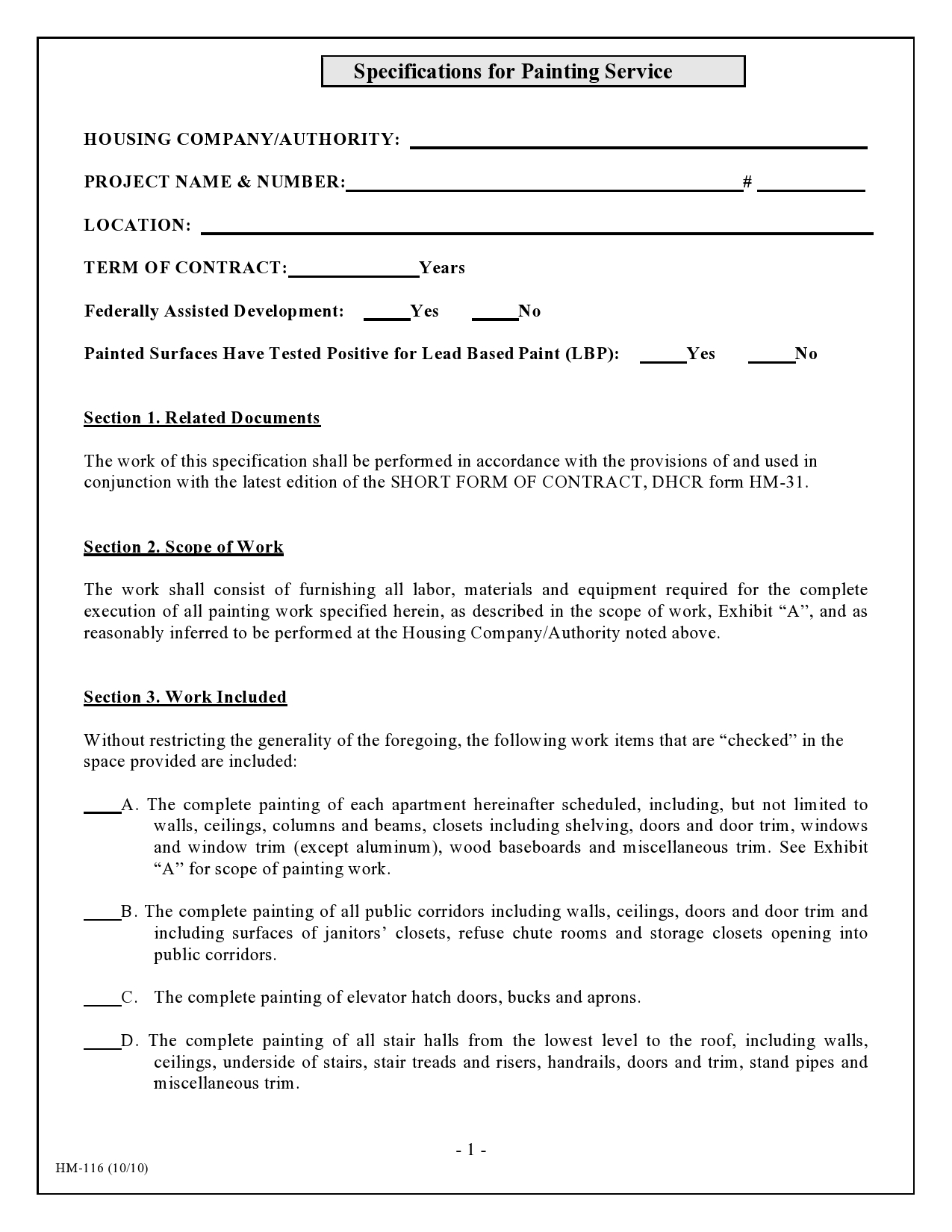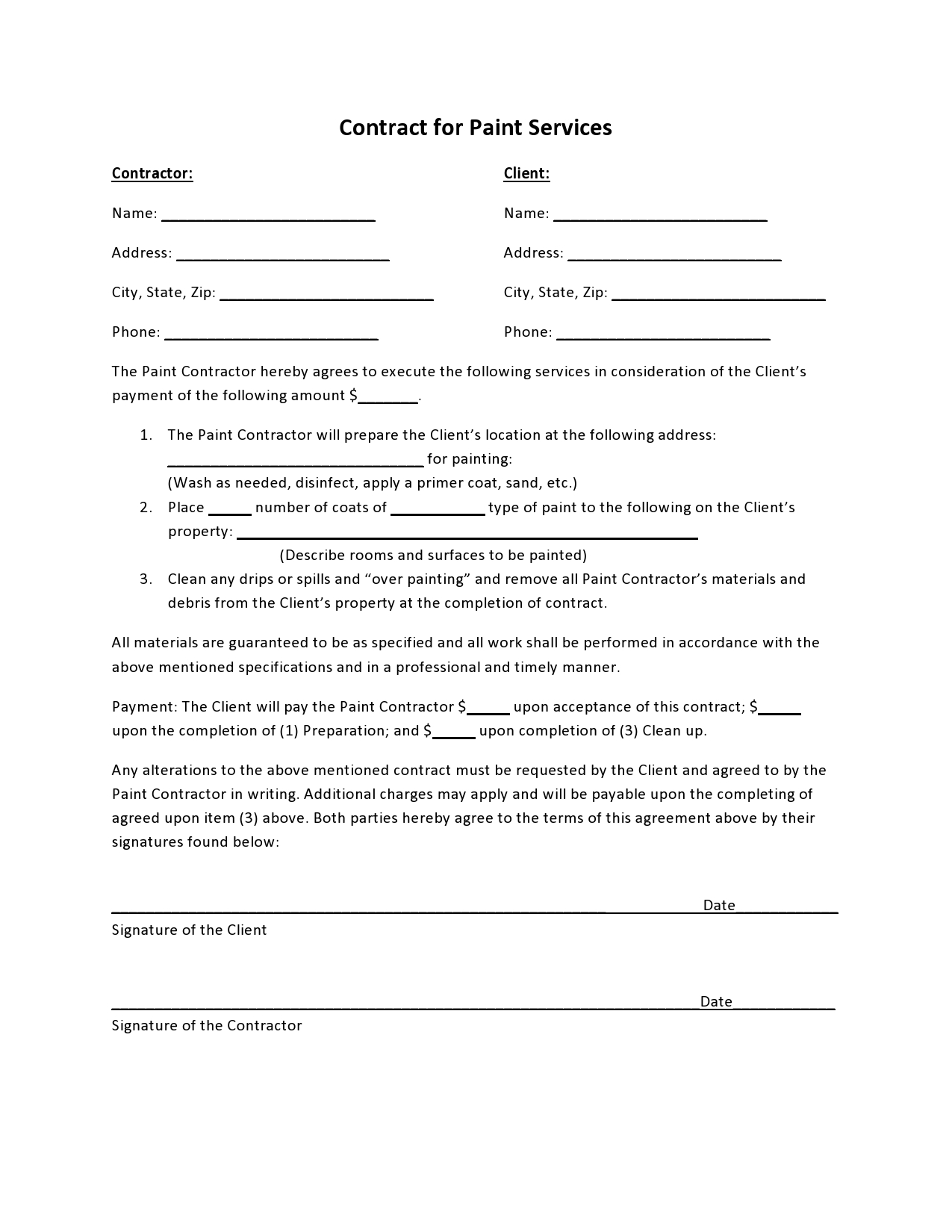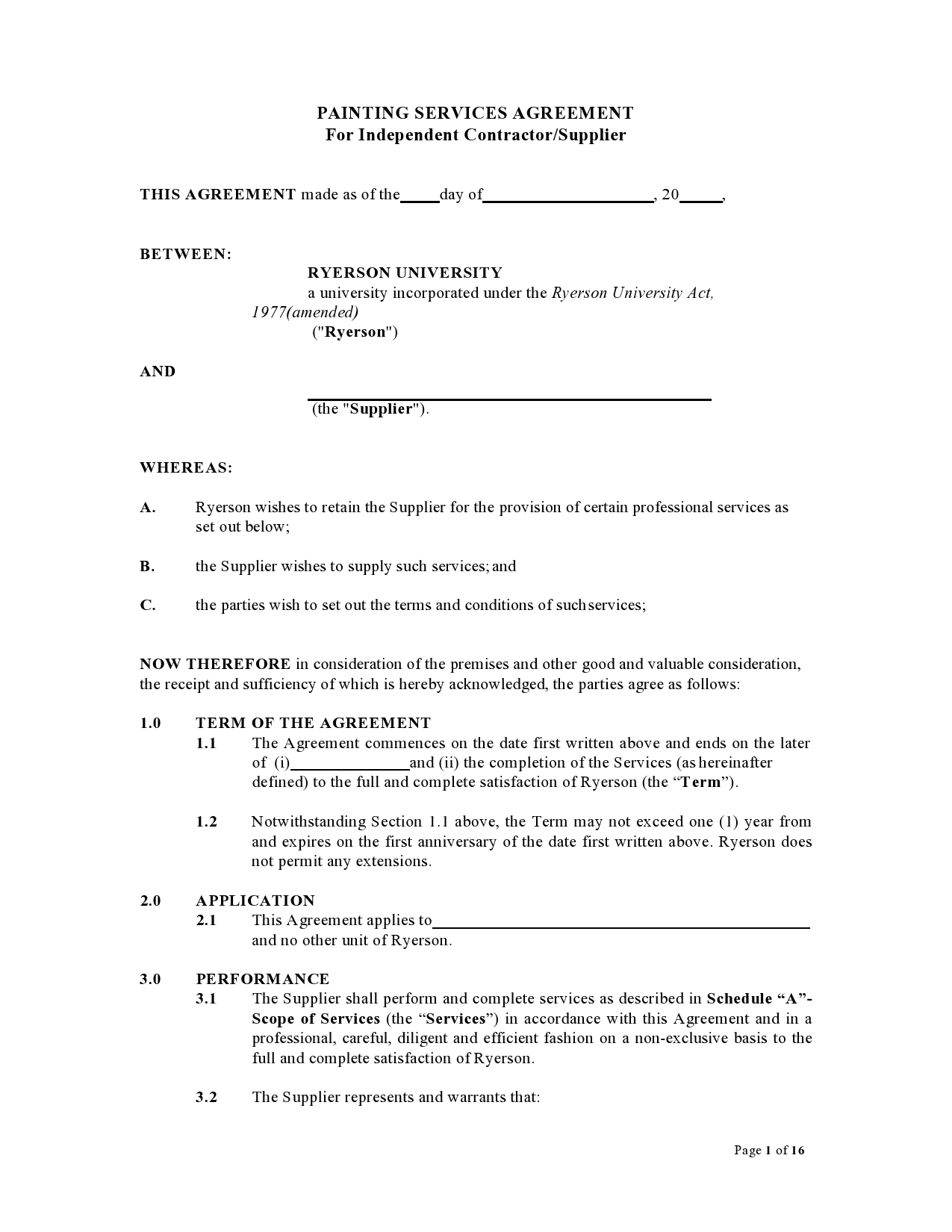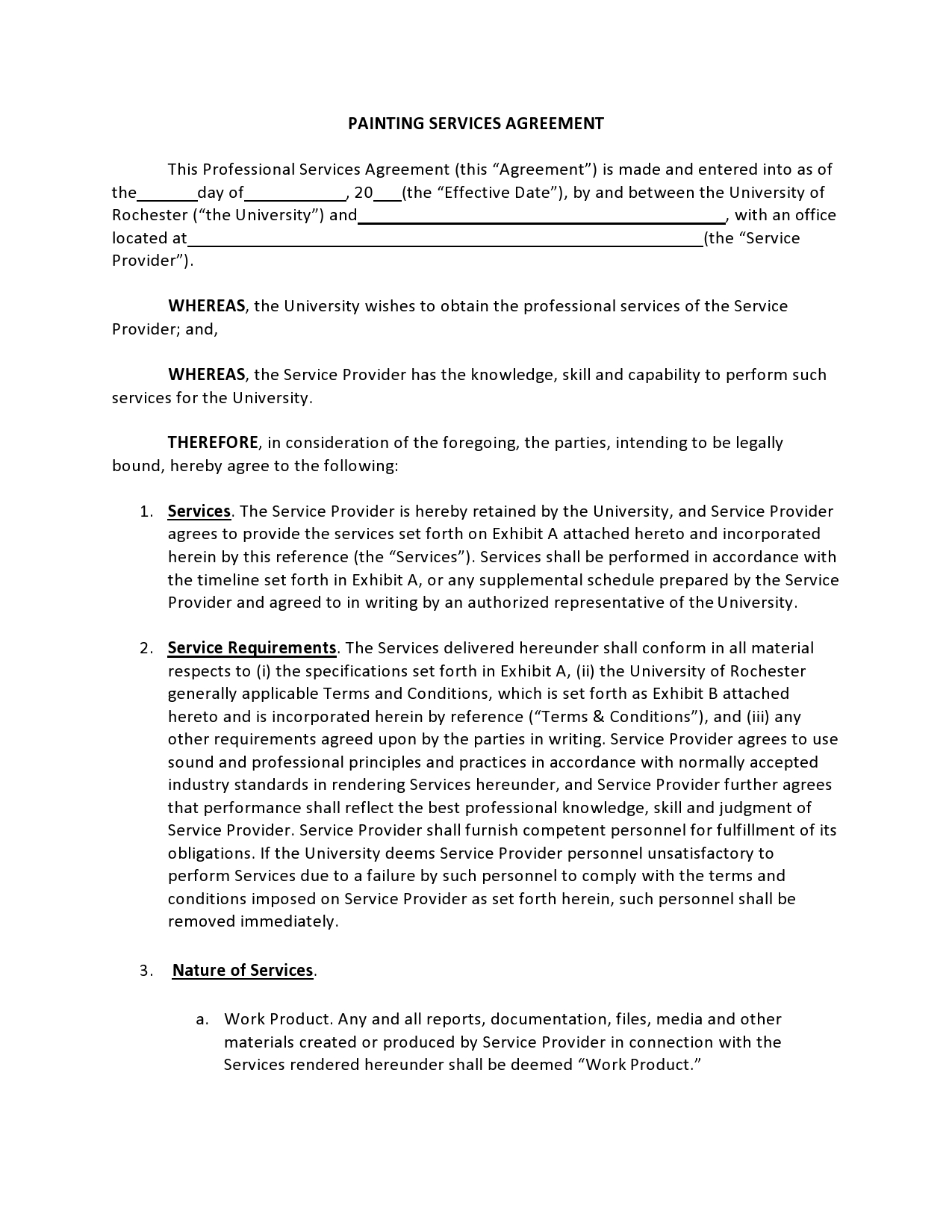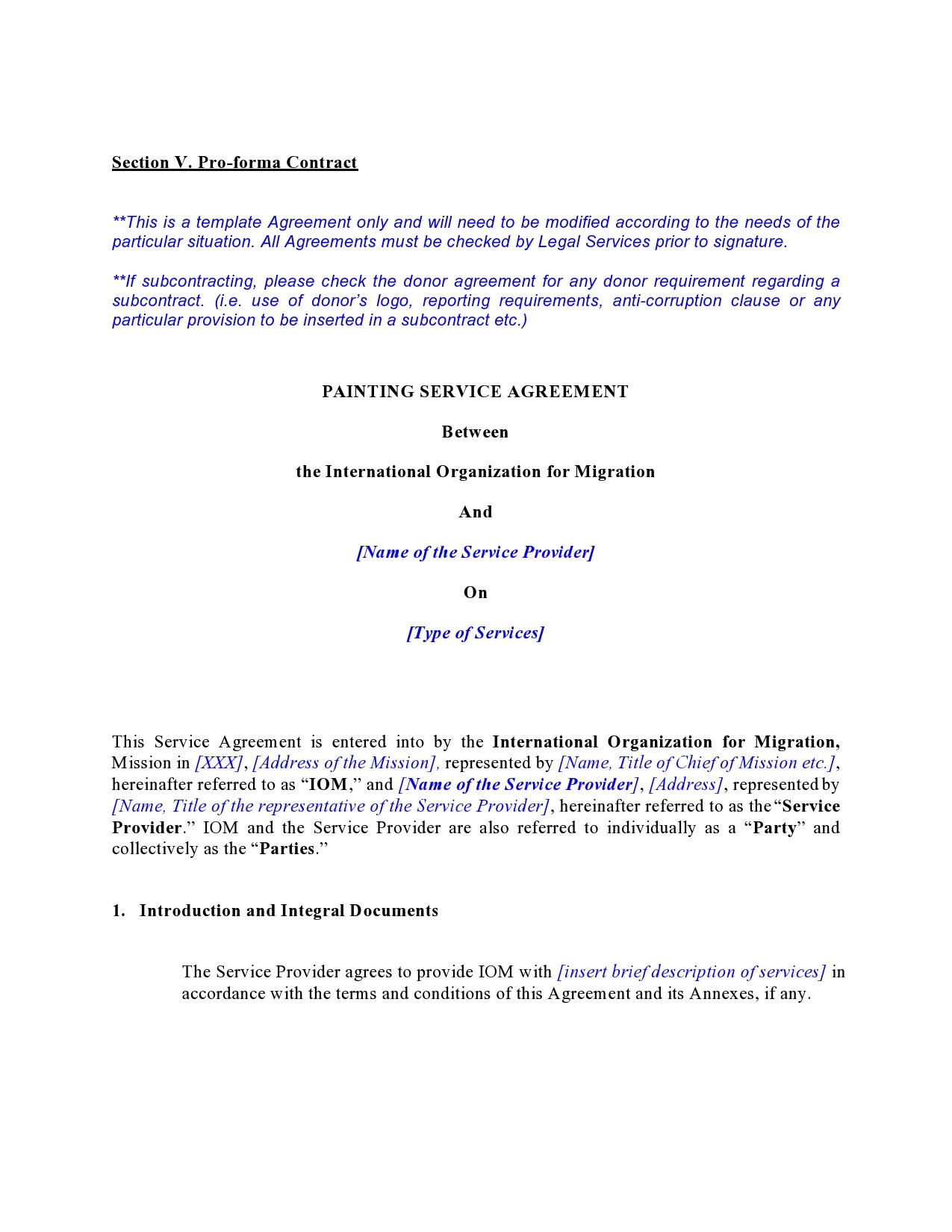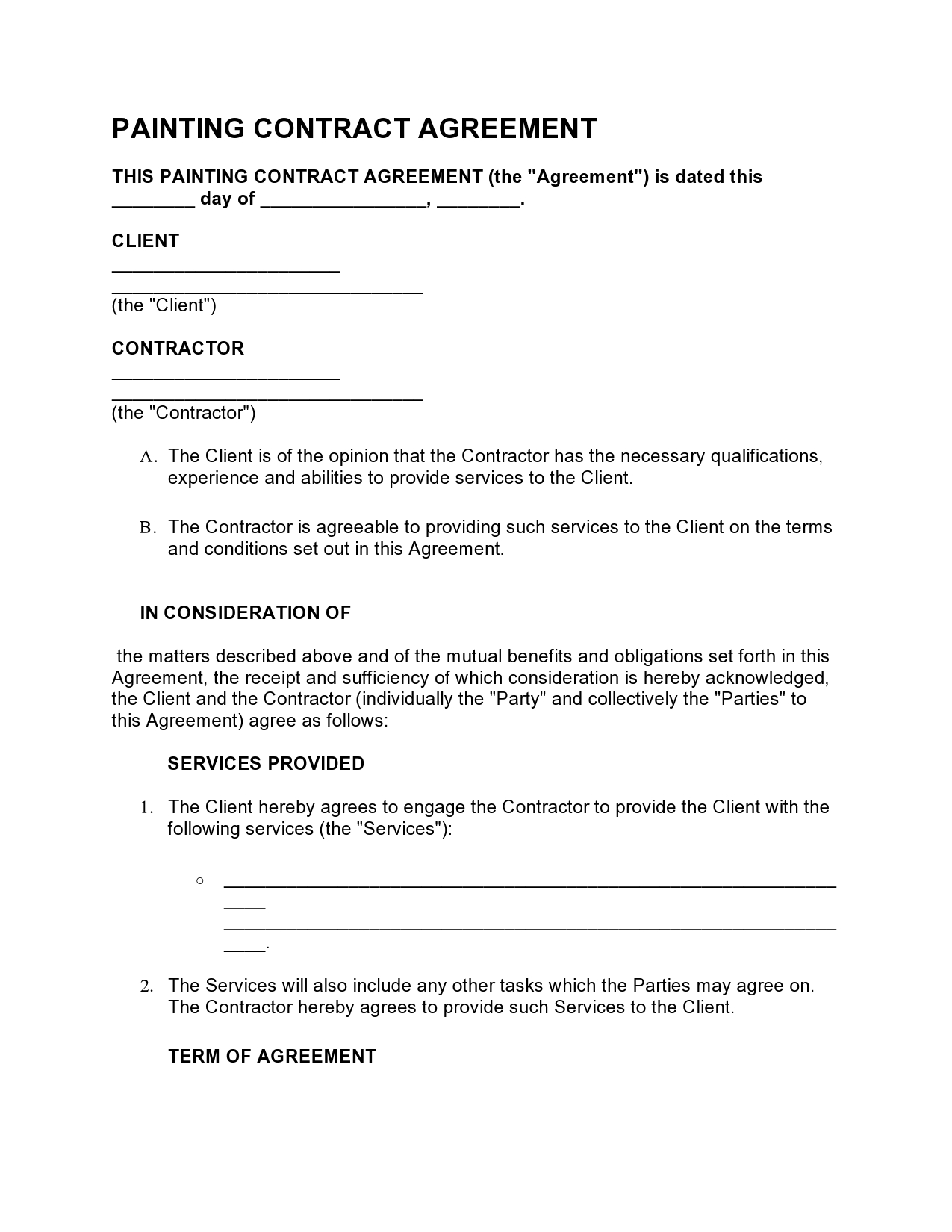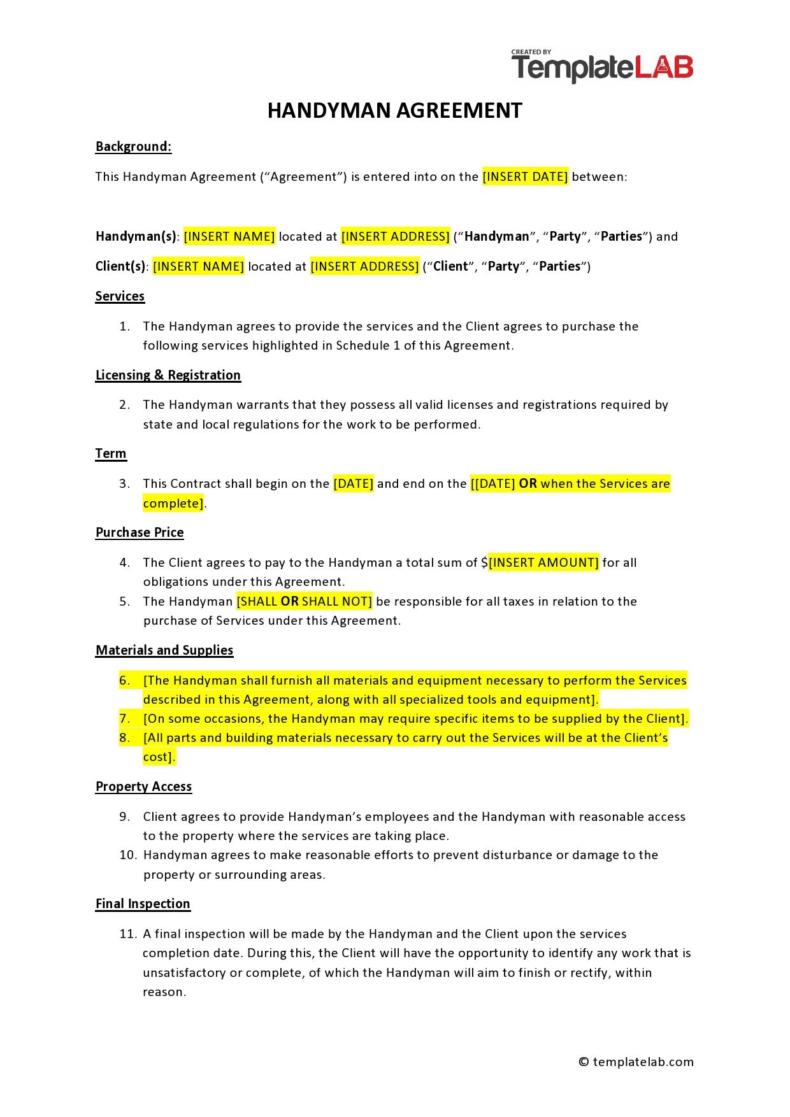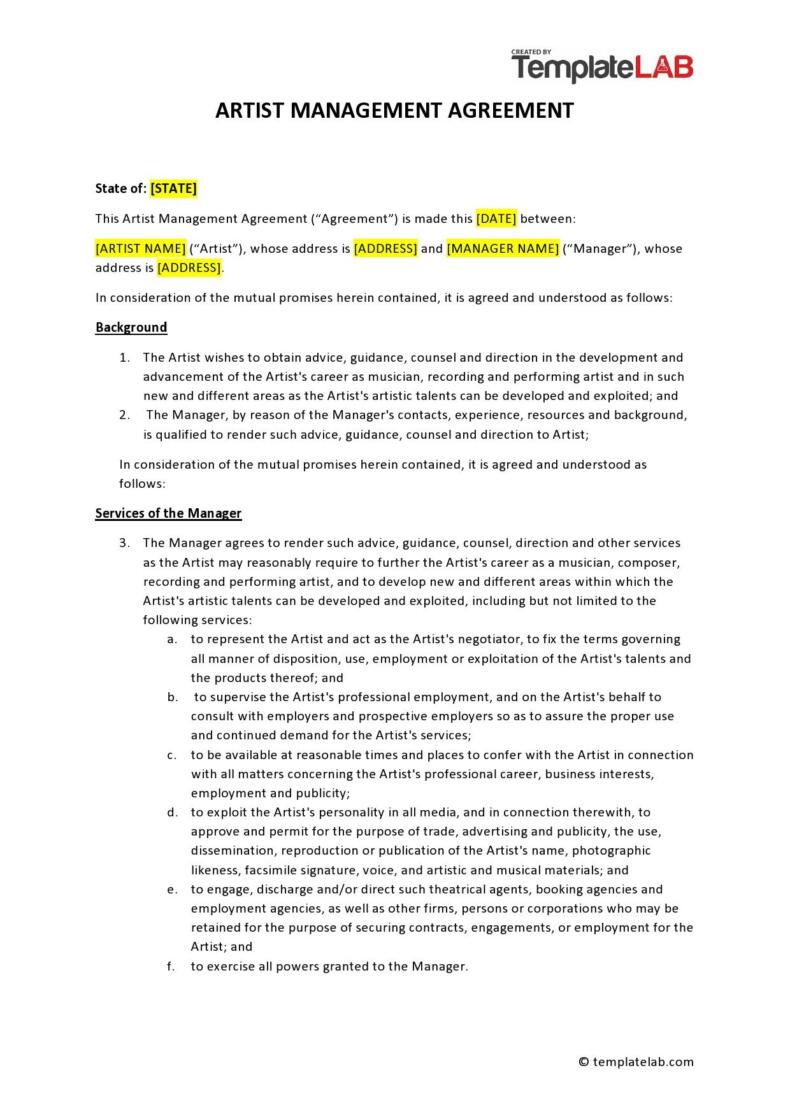If you are drafting a painting contract, you need to be sure that you are not just copying a painting contract template. There are many kinds of house painting contract out there to look at, and the details of your residential painting contract or your business painting contract might need to be different for each job. Writing an interior painting contact or a contract for painting services that are more general might require different language to be included in the document. A painting contract protects both parties involved in a painting job.
Table of Contents
Painting Contract Templates
What is a Painting Contract?
Painting contracts are used to establish the details of a painting job. The services that are to be provided will be carefully detailed in the contract, and the expectations for
House Painting Contract Templates
How Do You Write a Contract for Painting?
A painting contract needs to include the right information to be valid. When you leave out portions of the information that is needed to guide the completion of a painting contract, you invite confusion about the job and possible legal action as well. Handshake deals are never a good idea, and you will always have the best results if you take the time to write a thorough painting contract for your business needs.
There are some specific segments that must be in all of your painting contracts, no matter how specific or special the job in question might be. If you leave out any of these segments, your contract could be considered invalid or might lead to miscommunication about the nature of the job that is to be done. The more clear your contract is, the better your working experience will be with each client.
- Date of the Contract. This is the date that the contract goes into effect, and it might also be the start date of the job itself. If you are starting the actual work on another day, you must indicate that the first day of the painting job will be on a different date. The end date of the painting job will also need to be outlined along with any dates related to milestones or different stages of the painting process.
- Party Information. Your business name and information, along with your address and contact information, need to be at the top of the contract. You will also need to have the full legal name and address, and phone number of all of the parties that you are painting for on your contract. This information will need to be supplied for everyone who is going to be involved in paying for or contracting out the job in question. When you leave out information about who the work is being done for or about your own business, you might make the contract invalid.
- Services That Are to be Done. All of the services that you are going to be offering for the job in question need to be carefully outlined and specifically named in the contract. You will want to put the pricing for each service and any bidding information that led to your pricing quote in this section as well. The labor of the painters and the materials that are needed must be outlined as well. If there is any preparation that needs to be done for the painting job, you will need to describe this part of the process and when it is going to be taking place. Finish work and other finalizing details will also need to be outlined in this part of the contract for clarity. Any specialty services that you do not normally offer to clients that you are providing for a job need to be described in this section of the document as well. The more unique the service, the more detailed you need to be about the nature of it in your painting contract.
- Payment. The payment section will need to describe how payment is going to be handled and what the payment method will be. Installment payments need to have dates associated with them and need to be carefully explained so that there is no confusion about their execution later. If you have taken a deposit for the job, this information needs to be included as well in the payment section of the contract.
- Dispute Resolution. While you are not likely to be planning to have disputes or conflicts with your clients, these kinds of interactions can happen during painting jobs. You will need to refer to the state laws that govern your business and also any legal information that you want your client to have access to. These laws and this legal information will tell you and the client what can be done when there is conflict over the way that the job was executed. This is also the segment where there can be a discussion about how a contract can be considered to be breached. If you are not sure about the legal portion of your painting contract, you can work with a legal expert to find out some more about what should be put into this section of the document. You do not want to open your company up for legal conflict, so making sure that dispute resolution is included in your contract with correct legal references can be critical.
- Right to Cancel. Most painting contracts will have a section that states that there is a three-day right of cancellation that is offered after the document has been signed. The number of days in the cancellation period might vary depending upon your state, but there is always some form of cancellation period that is offered per state law. Make sure that you are keeping pace with the legal right to cancel that is connected with your state. This information will need to be in keeping with the legal standard where you operate your business.
- Signatures. All of the parties who agree to the contract will need to sign it and date their signatures. If even one party does not sign the contract, it is not considered valid. Make sure that you collect the signatures of all of the people who are involved in contracting you for your work. You cannot consider the contract valid and binding if there are missing signatures on the part of anyone who is involved in the contract’s execution.
Painting Contract Forms
What Should a Painting Contract Look Like?
There are some sections that must be included in your painting contract that are not like other contracts. Painting is a job that must be estimated and must have a bid delivered that describes the job in question before anything else can be agreed upon. This information will need to be included in the painting contract that you draft, and it will be unique for each job. These are the different items that will need to be included in your painting contract for it to be valid:
Materials Estimate
You will need to measure all of the areas that you are going to be painting, and these measurements need to be included in the painting contract. If the job is an interior paint job, each room that is going to be painted will need to be measured and documented as well.
Windows and doors might not need any painting treatment if you are only painting the walls. Make sure that you bid for trim painting if you are expected to provide this service. This is usually a separate charge and might be done on a different day.
From all of these measurements, you will determine the amount of each paint that will be needed to take care of your painting job. One gallon of paint can cover 250 square feet. You will likely need at least two coats of paint. The rest of the consideration in this part of the bid is just doing the math for the total job.
The paint costs are often estimated for top-quality paint, and mid-quality paint, and then the client chooses which products they want to use. You will also need to estimate for general supplies like drop cloths and other items if you charge for these with your painting jobs. Most painters do not charge for these items, but if you do, this must be included.
Labor Estimate
Painting is time-intensive, and labor is calculated by the hour. Most painting jobs are done by pairs of painters. Two painters can take care of 2,500 square feet in two days. Labor costs can vary but are often about $500 per person who is painting.
You will need to look at the total square footage that needs to be painted and your available manpower to decide what labor will cost. Make sure to figure in things like taping, stripping and sanding, and flashing things off. You will also want to build in time for accidents or repainting that might have to happen. Environmental challenges and other external factors can impact the performance of paints and lead to the need to repaint sections.
Both of these estimates need to be approximate, and they need to be written with room for making errors in the calculations in question. You will not always know for sure about the conditions of the job until you are working on it, and you cannot always predict the amount of time and materials that will be needed to complete a job in advance. If you forget to build on the assumption that your numbers might not be spot on, you could open yourself up to losing money on your painting jobs.
Painting contracts have to be specific about what is not known about the job in advance. This is why most painting contracts are secured with a down payment or a deposit, and then the client finishes paying for the job once it is completed. You cannot be wildly incorrect in your estimates for your jobs, but you will need to build in these considerations into every painting contract that you create.
Painting contracts will work like most other work-based contracts, but the bidding and estimating segments are a bit more unique. There are many other kinds of jobs where the exact figures for these items will be known, but when you are working with painting tasks this is not always realistic. Make sure that you are not forgetting about these important parts of your painting job bid to protect your company from lost revenue related to estimates that were slightly incorrect.
Residential Painting Contracts
Painting Contracts Are Critical For Your Business
The painting contracts that a painting business creates are essential to the guidance of the jobs that are done for clients. Without a detailed and accurate painting contract, no work can reliably be done and there can be disagreements between the painters and the client about the specifics of the job. You will need to be sure that you are writing painting contracts that are going to be detailed enough to explain the job clearly and to make sure that there are no conflicts with clients if something takes longer or costs slightly more than planned on.
Since estimates are part of your business, you will need to include your estimate information in your painting contracts as well. This is critical information about the nature of the job, and it notifies the client about the possible discrepancies in the cost and the materials that are needed for the job. Make sure that you include all the sections of your painting contract, even when writing contracts for very unique jobs. Leaving out any of the necessary parts of a painting contract can render it invalid or lead to issues down the road that could have been avoided.

